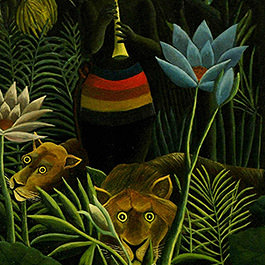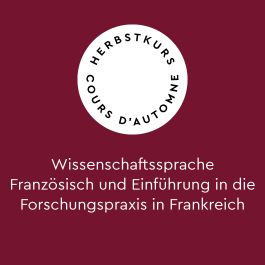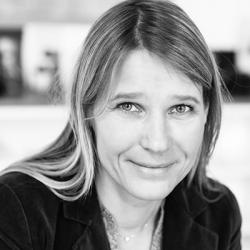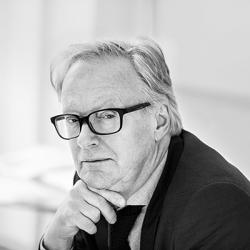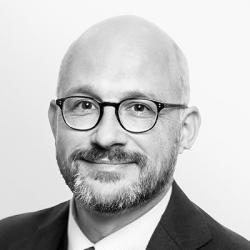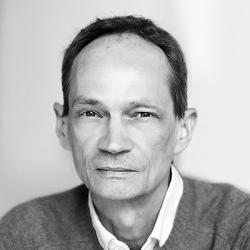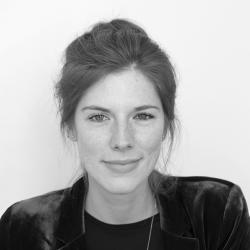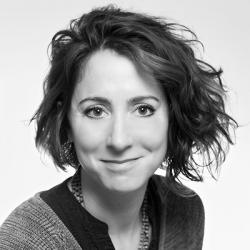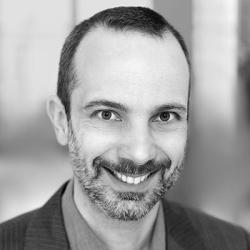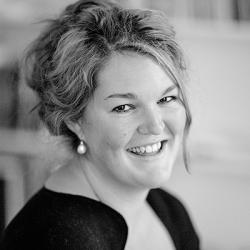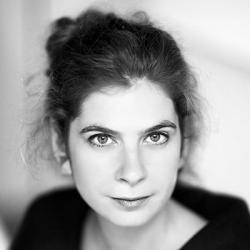Call for Papers
5th Transregional Academy on Latin American Art
Contesting Objects: Sites, Narratives, Contexts
The German Center for Art History (DFK Paris, Max Weber Foundation), the Bibliotheca Hertziana – Max Planck Institute for Art History in Rome (BHMPI), and the Museo de Arte de Lima (MALI) invite doctoral candidates and postdoctoral researchers in the field of art history and allied disciplines to apply for the 5th Transregional Academy on Art and Culture in Latin America, which will convene at the Museo de Arte de Lima from May 4 to May 12, 2024. The Academy is made possible with support from Getty through its Connecting Art Histories Initiative and will be conducted in cooperation with the Forum Transregionale Studien (Berlin).
Rationale
Viewed from a transregional perspective, the relationship between an object and its discursive embedding is influenced not only by history and institutions but also by culture, society, and the region itself. These interconnections call for a situated research and an interdisciplinary approach so that objects are considered in light of their complex contexts: environment, class, gender, race, economy, religion, academia, museum, etc. The term “objects” includes all expressions of the visual arts; however, viewed through the lens of their objecthood, objects are a stage for exploring transcultural references, negotiations, and impositions, raising important questions for a transregional art history. As in the case of pre-Columbian objects, most artifacts transgress modern conceptual categories of art, showing that received notions of art can be performed, imposed or rejected; in fact, their nomination points to the epistemic violence inherent to every history and instance of instrumentalization (musealization, iconization, scientification, narration etc.). These interwoven layers of possible approaches cannot be studied solely from a regional perspective. They are best analyzed by means of relational studies, using a dialogical approach focusing more on interconnectedness than on comparison. The theme, “Contesting Objects: Sites, Narratives, Contexts”, therefore, promotes a transregional exploration of the material and intellectual foundations of art historical research: How do different notions of art history bring different objects to light? How does art history identify itself through specific objects? How do certain objects challenge art historical discourses, and when do their presence demand interdisciplinary approaches? And most importantly: how can a transregional perspective with an emphasis on Latin America expand the scope of understanding the links between the object and its art histories in different social, cultural and ideological constellations?
Latin America from a Transregional Perspective
The Academy’s prism and location is Latin America from a transregional perspective. Working outward from there, artistic processes of exchange within the American continent will be analyzed from a transregional and transcultural perspective against the backdrop of the concurrent international entanglements and connections. Instead of merely describing and comparing artistic tendencies, the interconnectedness and the multitude of cultural and creative processes and strategies of appropriation, including contradictory modalities of translation and analogy or conflicting, nonlinear transfers, will be discussed. Such a transregional perspective can only be viable if research conducted in or on Latin American countries is brought into dialogue with discussions taking place elsewhere, within an international context, and vice-versa. This relational, dialogical approach forms the foundation of the Academy's methodological framework. In that sense, a historiographical perspective is necessary to gauge the extent to which there can be a common conceptual and epistemological basis. This applies not least to terms such as “translocal,” “transregional,” and “transcultural.”
Contesting objects
Premised on the notion that the question of images also emblematizes important shifts vis-à-vis an art history oriented toward normative concepts of artwork, we ask what the question of objects brings to art history, both in terms of material and intellectual foundations, and especially in view of tangible experiences: How does art history imagine its object and how do objects create different art histories – open or not to transdisciplinary dialogues depending on the diversity of material culture? The historical scope of the Academy’s investigation is deliberately not limited to any one era and seeks to avoid all contemporary historical caesurae. Project descriptions should address one of the following thematic fields:
Sites
Objects are situated items, in that they also refer to diverse notions of space, place or site. Their scale invites us to consider artistic creations outside of institutional spaces like museums and galleries. For instance, how can we consider the aesthetic experience of urban contexts, both verbally and visually? How can we grasp the fragility of sites? And how do notions of inside and outside vary depending on transregional perspectives?
Contexts
While reproductions and presentation of artworks may have accustomed viewers to seeing them depicted without frames or a space surrounding them, the question of objects inevitably brings a complex ecosystem into play – an environment that is more permeable to societies and cultures surrounding them, and thus different from that of the white cube, for example. The focus is, thus, on the social and historical components that are indissolubly part of every object’s biography, both with regard to the context of their production and their reception. How do we reflect on these lived situations?
Display
Objects can be mobile. While some objects disappear or endure transregional encounters, others are rendered all the more visible. This dynamic engenders narratives that are conditioned both at the regional and transregional levels. How do we engage with these exposed objects? How do we react to the presence and absence of objects and their histories? How do we name them?
Agency
Objects are more than mere things: they are linked to narratives and have an agency on their own. Therefore, they may offer a critical counterpoint to abstract concepts and narrations, or be tamed by them; they may seem suitable for both critical and theoretical inquiries as well as positivist approaches. How can we discuss these different concepts of agency and their historiographic contexts?
Sensual approach
Objects appeal to a variety of senses, oftentimes challenging academic research, as they engage the researcher’s bodily experiences. This provides an intriguing counterpoint to the colonial obsession with visibility, for instance, in the context of modernism. How does art history engage with these different domains of the sensible?
History
Each object participates in an intertwining of multiple histories. They allow different approaches stemming from such disciplines as anthropology, political science, history of science, or art history to imagine different takes on how history and objects interact. How can we think of objects in relation to transregional histories without assuming a mere illustration or reflection but without also overestimating the agency of objects in the face of political forces?
Identity
Objects may also be linked to very different conceptions of identity if we think of Amerindian perspectivism, micropolitics or disembodied philosophies. How does art historical research navigate this multitude of concepts? Is it even important or desirable to have a common epistemological basis for how we comprehend objects?
The 5th Transregional Academy on Art and Culture in Latin America will be held as part of the DFK Paris’s research area, “Traveling Art Histories: Transregional Networks in Exchange between Latin America and Europe”. The four preceding Academies addressed the themes of “Modernism: Concepts, Contexts, and Circulation” (São Paulo, 2016), “Mobility: Objects, Materials, Concepts, and Actors in Art” (Buenos Aires, 2017), “Spaces of Art: Concepts and Impacts in and outside Latin America” (Mexico City, 2019), and “Plural temporalities. Theories and Practices of Time” (Bogotá, 2022).
Steering Committee
- Luisa Elena Alcalá (Universidad Autónoma de Madrid, UAM)
- Lena Bader (DFK Paris)
- Peter Geimer (DFK Paris)
- Anne Lafont (École des hautes études en sciences sociales, EHESS, Paris)
- Sharon Lerner (MALI Lima)
- Natalia Majluf (Independent Art Historian)
- Tristan Weddigen (BHMPI, Rome)
Participation Requirements and Application Guidelines
The Transregional Academy is a format of the Berlin-based Forum Transregionale Studien. It promotes intensive peer-to-peer dialogue to generate new perspectives. Participants are actively involved in structuring the program and developing its content. They present their individual research projects and, together, form discussion groups around specific themes. The majority of the findings are expected to result from intensive small-group work and discussion, whereas others will emerge from exchanges with local experts.
We invite applications from emerging and young scholars (with a master’s degree and/or Ph.D. within the past five years as well as doctoral candidates and postdoctoral researchers). Up to twenty participants from different countries and academic contexts will be selected and given an opportunity to present and discuss their current research in an international, multidisciplinary setting. Participants will receive a grant to cover their transportation and accommodation costs. The program is aimed at researchers in art history as well as neighboring disciplines such as postcolonial studies, literary and cultural studies, anthropology, architecture, history, political science, sociology, and media studies. The applicants’ research projects should be closely linked to the Academy’s themes, exhibit a Latin American focus, and adopt an explicitly transregional perspective.
The working language is English.
Applications must be submitted in English and include the following documents:
- letter of motivation (2,500 characters, incl. spaces) outlining how your project fits into the current research landscape and the Academy’s topic
- a short biography (1,000 characters, incl. spaces; running text) that includes information on your country of origin and current residence
- an outline summarizing your current research project (5,000 characters, incl. spaces)
- the names of two academic references (no letter of recommendation required)
- and reading suggestions for a possible thematic session (title and short description of 2-3 sentences detailing why this text is interesting to you)
We kindly ask you to submit your application via the secure online application platform of the Forum Transregionale Studien by June 15, 2023, 23.59h CET: application.trafo-berlin.de
For inquiries related to program content, please contact: Lena Bader, DFK Paris, 45 rue des Petits Champs, 75001 Paris, lbader@dfk-paris.org.
For inquiries regarding the application process and organization, please contact: Jacqueline Wagner, Forum Transregionale Studien, Wallotstr. 14, 14193 Berlin, +49-30-89001-430, academies@trafoberlin.de.
For all questions regarding the application platform, please contact: support@trafo-berlin.de.
For further information on the previous academies and the participating institutions, visit:
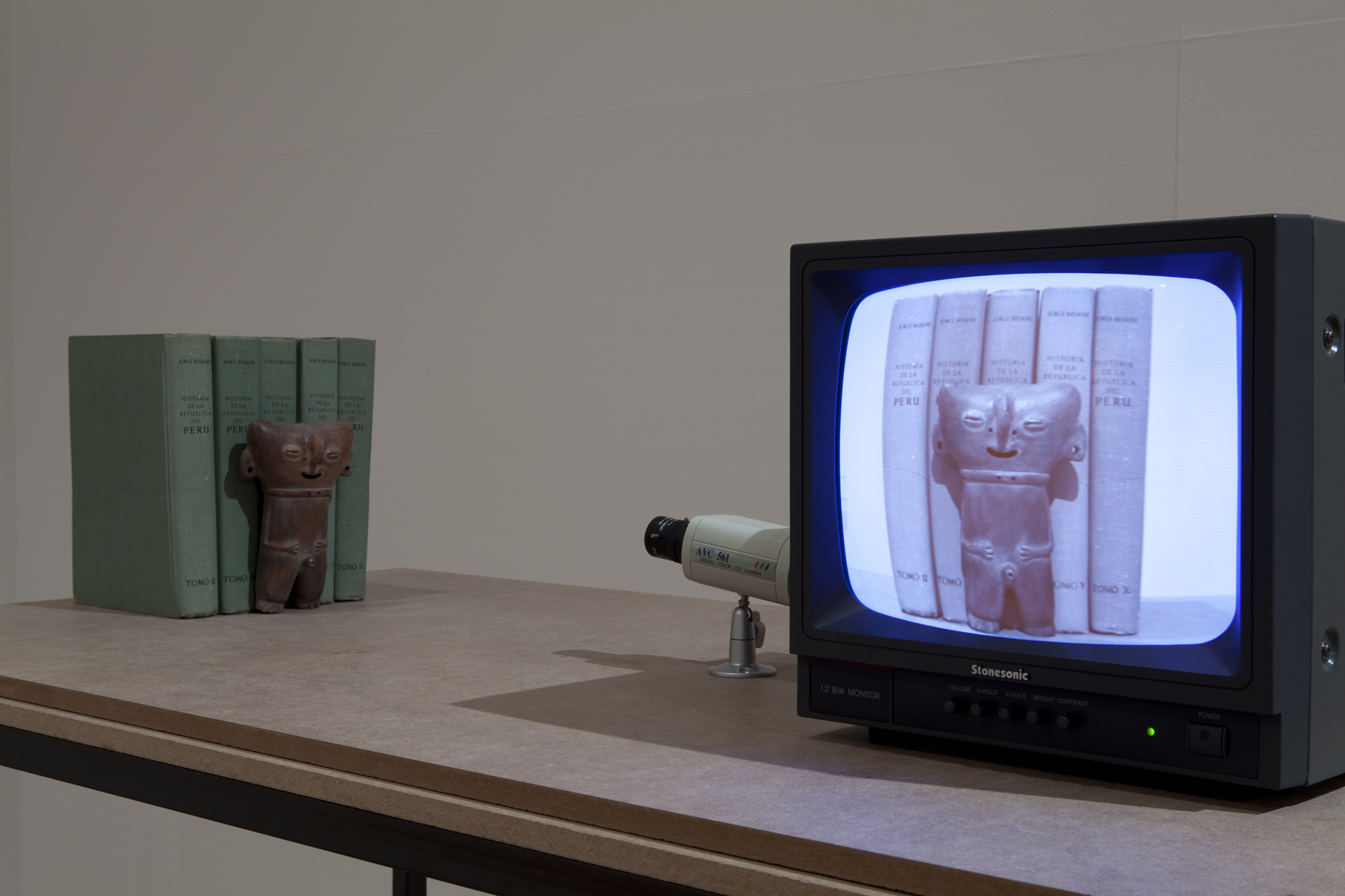 Fernando Bryce Vivanco, Huaco TV, 1999-2000, vitrina con cerámica, libros y sistema de circuito cerrado, medidas variables, Museo de Arte de Lima, donación del autor y Fernando Bryce Lostanau
Fernando Bryce Vivanco, Huaco TV, 1999-2000, vitrina con cerámica, libros y sistema de circuito cerrado, medidas variables, Museo de Arte de Lima, donación del autor y Fernando Bryce Lostanau- Venue:
Museo de Arte de Lima - Date:
May 4–12, 2024 - Deadline:
June 15, 2023, 23:59 CET - Online Application Platform:
application.trafo-berlin.de
The Académie Royale Art Collection
Collaborative publication project
Publishing envisaged for 2023, as volume of the series Passages online, DFK Paris
Editors: Markus A. Castor, Sofya Dmitrieva and Anne Klammt
Our book aspires to highlight the importance of the art collection that the Académie royale de peinture et de sculpture assembled in the century and a half of its existence (1648-1793) and show that this unique, yet almost entirely unstudied, body of works is essential to our understanding of eighteenth-century art and institutional practices.
The Académie royale art collection consisted mainly of reception pieces – the works that young artists submitted for examination by the academic jury to become full members of the institution. It also included miscellaneous donated artworks as well as portraits of the Académie’s patrons that the institution frequently commissioned from current members. Around 300 paintings and some 30 sculptures were on display in the Académie’s rooms at the Louvre and daily surrounded the artists who lived and worked there. The latter could also consult a rich collection of engravings at the Académie’s print room.
The collection was a unique corpus for multiple reasons. Firstly, as almost all the prominent old regime artists were members of the Académie royale, it united such iconic reception pieces as Watteau’s Pilgrimage to the Isle of Cythera (1717), Chardin’s Ray (1728) and Greuze’s Septimius Severus and Caracalla (1769). Secondly, these and other examinational works now offer invaluable insights into academic reception practices and aesthetic values as much as the commissioned portraits of the Académie’s patrons – into its behind-the-scenes personal networks. Finally, the hang of the works in the Louvre is an outstanding example of eighteenth-century curatorial work: since the collection’s arrangement was decided upon by academicians themselves, it stands an important ‘internal’ counterpart to the Académie’s public display, the Salons.
After the French Revolution, this one-of-a-kind body of works got dispersed and is shared today by the Louvre, the Versailles, the ENSBA, and several French regional museums. Thankfully, however, two detailed descriptions are still extant: in 1715, when the collection was housed on the Louvre’s ground floor, it was documented by Nicolas Guérin (Paris: J. Collombat), and in 1781, when it moved to the first floor, it was recorded by Antoine-Nicolas Dezallier d’Argenville (Paris: De Bure). In 1893, the two descriptions were republished as one volume by Anatole de Montaiglon. Two key critical works on the collection are the exhibition catalogue Les peintres du roi, 1648-1793 (Paris: Réunion des musées nationaux, 2000) and Hannah Williams's monograph Académie Royale: A History in Portraits (Farnham: Ashgate, 2015).
The present book is part of the project run by the DFK Paris in collaboration with the Centre Dominique-Vivant Denon (Louvre) and the INHA that aspires to reconstruct the collection digitally and build a database of the works that constituted it.
We invite contributions that define the role of the Académie royale art collection and discuss its history and arrangement. Issues of our interest include but are not limited to:
- Collection arrangement: How did the hangs of the collection on the first and the ground floor of the Louvre differ? What were the guiding principles of the collection’s arrangement? What role did genre play in it? What was the function of different rooms and how did the works adorning the room reflect it? Did the arrangement reflect the Académie’s institutional hierarchy? How did prints, sculptures, and paintings that formed the collection work together?
- Instructive function of the collection: How did these sculptures, paintings, and prints, seen by the Académie’s students on day-to-day basis, influence their work? What message (if any) did they convey?
- Reception pieces: What role did the reception play in the artist’s career? What was the canon of academic reception pieces? How did it help crystallise the academic genre classification?
- Commissioned portraits: Who were the Académie’s patrons whose portraits the institution commissioned from its members? What role did these patrons play in the history of the Académie royale? How were they related to each other and what was their specific interest in sponsoring the institution?
- Conférences de l’Académie royale: How do the lectures that the members regularly delivered at the Académie royale relate to the collection? How do both reflect the Académie’s institutional and aesthetic values? What is the significance of the Salle d’Assemblée as the centre of the institutional life of the Académie royale?
- Dispersal of the collection: How were the works constituting the collection distributed after the French Revolution? What were the unique stories of these paintings, prints, and sculptures post-1793?
Contributions are welcome in English or French and are expected to be between 5,000 and 15,000 words in length. If you are interested, please send a short 300-word abstract and a brief 50-word biography to Sofya Dmitrieva sofya.k.dmitrieva@gmail.com by September 30, 2022. The deadline for selected contributions will be March 31, 2023.
EMERGENCE
From the place to the space of images in French art from the 17th to the 19th Century
International Conference
9–10 December 2022 at the German Center for Art History (DFK Paris), Hôtel Lully, 45, Rue des Petits Champs, 75001 PARIS
Conception : Markus Castor, Julia Kloss-Weber and Valérie Kobi
(For further informations please download the PDF Document on the right)
The question of the emergence of pictorial forms of expression can also be understood as a mat-ter of the place, or – perhaps even better – the space, of images. Even the classical approach to reception aesthetics presupposes that images are constitutively tailored to a viewing subject and that this relation to a recipient is essentially reflected in the inner structures of the image or rather already conceptually based thereupon. Such pictorial dispositions are only comprehensible by taking into account the image’s inner spatial configurations in their relationship to the installation space and its features (the exhibition or hanging), i.e. in the experience of the interweaving of pictorial space, viewing context, and recipient.
Gernot Böhme narrowed down this basic relationship between the material object and the viewer in his aesthetic theory of the atmospheric, in which he defined this relatum as atmosphere itself and directed our attention to the mutual shaping of two components, embodiment on the one hand and its appearance in perception on the other (Böhme 2001, p. 54). What is described here as a relation recent positions have further characterized in terms of aesthetic interstitiality (Breitenwischer 2018). Expanding on the debates around Bildakte, one can speak of a realization of the pictorial in an aesthetic in-between, which itself is only brought forth in the performance of the reception process and in the framework of which pictures and their beholders anticipate each other and dialectically constitute each other as such.
The targeted period of investigation is the 17th and 18th century. Contributions that develop new theoretical positions are especially welcome. Papers dealing with the 19th century are also acceptable, provided the subject matter pertains to practices or discourses from earlier centuries.
Individual papers are limited to 30 minutes, and joint papers to 40 minutes. Abstracts (approx. 300 words) may be submitted in the languages of the conference – namely English, French, and German – and should be sent with a short CV in a single PDF file to the following three email addresses: Julia Kloss-Weber (julia.kloss-weber@uni-hamburg.de), Valérie Kobi (va-lerie.kobi@unine.ch), and Markus A. Castor (mcastor@dfk-paris.org). Deadline for applications: 30.06.2022. Responses will be given in July 2022.
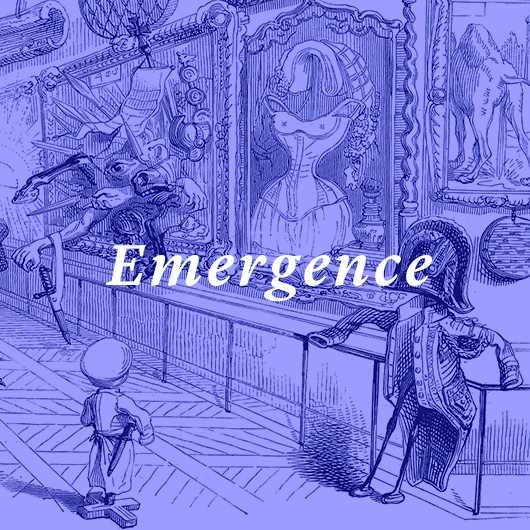
Georg Ludwig Friedrich Laves and Colleagues: Architects as Designers of Interiors and Furniture (1770-1860)
Hanover, 17–18 March 2023
Georg Ludwig Friedrich Laves (1788-1864), among the most important representatives of classicism in Germany, decisively shaped the image of the city of Hanover with his urbanplanning designs and structures. Numerous secular buildings, including the Leineschloss in the city centre – the residence of the kings of Hanover from 1837 to 1866 and today the seat of the Landtag of Lower Saxony – as well as the reconstructed Schloss Herrenhausen and private palace, are reminders of this court architect of the Kingdom of Hanover. Building alterations and new constructions based on his designs have survived in various places in what is now Lower Saxony, including Schloss Derneburg and the Schloss Celle. As part of these projects, Laves also designed the corresponding interiors, which put him in line with his famous contemporaries Karl Friedrich Schinkel (Berlin), Leo von Klenze and Jean-Baptiste Métivier (Munich), and Johann Conrad Bromeis (Kassel). A majority of the interiors designed by Laves were destroyed in World War II – such as the representative halls of the Leineschloss (1834-36) and the living quarters of the royal family in the Palais an der Leinstrasse (ca. 1818 and later) – and the furniture scattered. Based on the research project of Thomas Dann, who has a comprehensive view of designs for furniture and interiors thanks to his many years of archival work and research around surviving furniture, the Museum August Kestner is showing the
exhibition G. L. F. Laves – ein Hofarchitekt entwirft Möbel from 6 November 2022 to 26 March 2023. For the first time in Hanover, a selection of Laves’s drawings for furniture and interiors will be on view, together with examples of furniture created according to his designs. Parallel to the exhibition, mobile – Gesellschaft der Freunde von Möbel- und Raumkunst e.V., the Museum August Kestner, and the Deutsches Forum für Kunstgeschichte Paris are organizing an international conference that seeks to place Laves’s furniture and interior designs in a larger historical and cultural context. Among the well-known architects who were frequently encountered in the 19th century and who – like Laves in Hanover – designed interiors as well as furniture were the English architects Jeffry Wyatville, John Nash, and Thomas Hope, along
with Charles Percier, Pierre François Léonard Fontaine, and Jakob-Ignatz Hittorff in France and Pelagio Palagi in Italy. It is this special aspect of his work that is the focus of the conference “Georg Ludwig Friedrich Laves and Colleagues: Architects as Designers of Interiors and Furniture (1770-1860),” with particular emphasis on the furniture designs. From an expanded European perspective, the question of the defining characteristics of architects’ furniture will be taken up. Further themes and questions might include:
- What sources of inspiration/role models are called upon and what materials are preferred for the execution?
- What role do surrogate materials play, such as decoration in stucco or sheet iron and zinc?
- How did the transfer of knowledge transnationally between the architects and craftsmen work?
- What is the relationship between architect and client when it comes to the design of interior spaces?
- What sources are there on the collaboration between designers and the executing tradesmen?
The conference will take place on 17–18 March 2023 in the Museum August Kestner in Hanover and is geared towards junior and early career scholars. Proposals for a 20-minute presentation (abstract of 300 words maximum; the conference languages are German and English) together with a short biography (incl. email and physical address as well as institutional affiliation) should be emailed to the following address by 12 September 2022: laves@dfk-paris.org You will be informed of the outcome of your submission by the beginning of October 2022 at the latest.
The conference was organized by Mirjam Brandt (Museum August Kestner, Hanover), Andreas Büttner (Städtisches Museum Braunschweig), Jörg Ebeling (Deutsches Forum für Kunstgeschichte Paris), Martin Glinzer (art historian, Berlin), Henriette Graf (Stiftung Preußische Schlösser und Gärten Berlin-Brandenburg), Petra Krutisch (Germanisches Nationalmuseum, Nuremberg), and Sally Schöne (Museum August Kestner, Hanover).
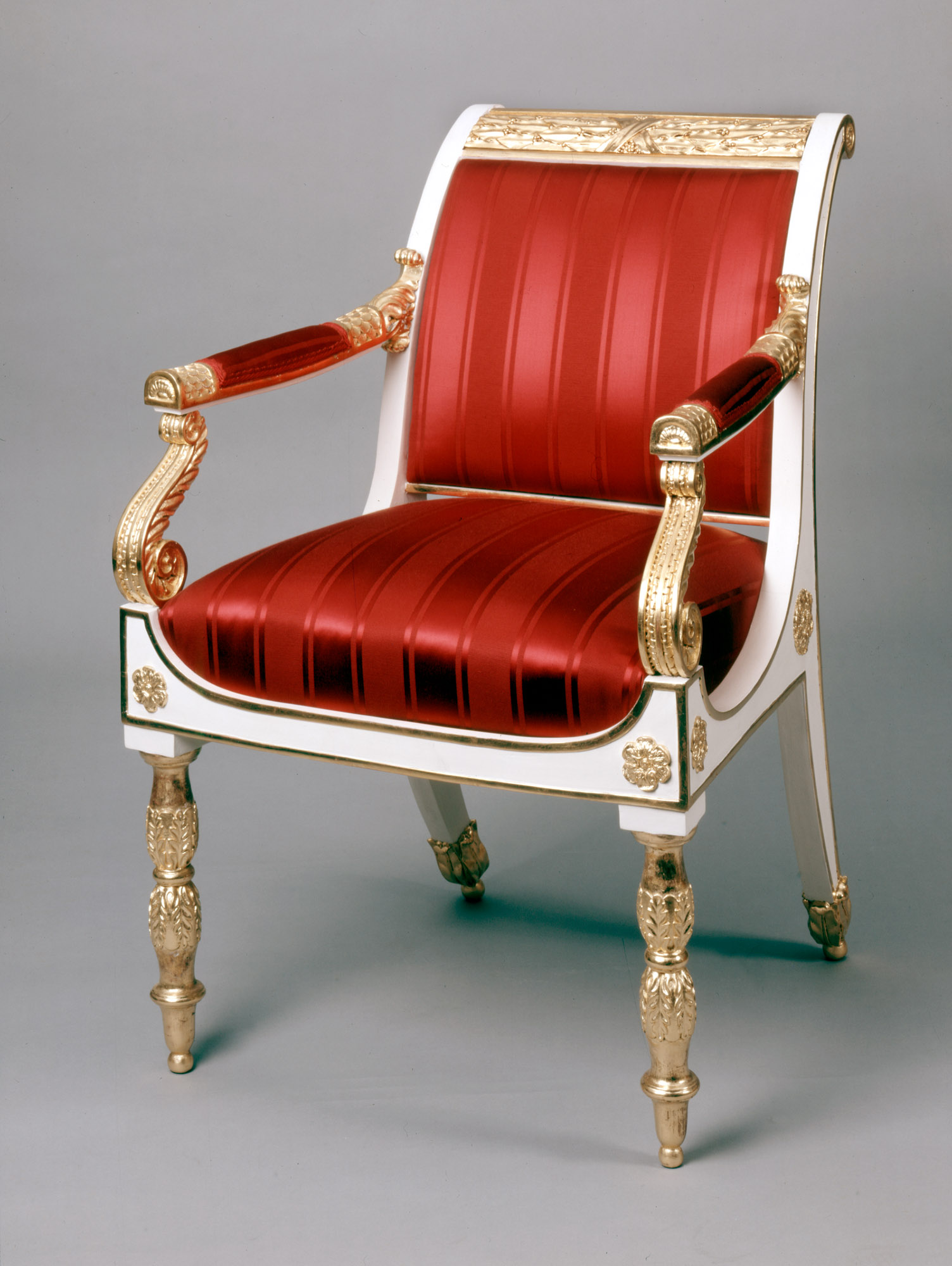 Photo: Armlehnstuhl für das Palais an der Leinstraße, um 1820, nach einem Entwurf von Georg Ludwig Friedrich Laves (1788-1864), Historisches Museum Hannover
Photo: Armlehnstuhl für das Palais an der Leinstraße, um 1820, nach einem Entwurf von Georg Ludwig Friedrich Laves (1788-1864), Historisches Museum HannoverHistorical interiors and the digital – the possibilities and limits of virtual reconstructions for research
International symposium
Organized jointly by the German Center for Art History Paris (DFK Paris), the Mobilier national, and the Centre de recherche du château de Versailles (CRCV)
Location: Paris and Versailles
Date: November 17 and 18, 2022
Contact: interieursetnumerique@dfk-paris.org
The virtual reconstruction of historical interiors – from architecture to wall decoration and furniture to textiles – has been a proven instrument of cultural mediation in recent years, particularly in museums, exhibitions and/or for the study of historical monuments (for instance in archaeology). Questions of spatial proportions and fundamental architectural units are today at the forefront, with emphasis often placed on the possibility of visiting these spaces virtually, either on a 2D screen or with an immersive headset. However, when it comes to the recreation of the aesthetic characteristics of interiors, which are one of the key issues for their understanding, the possibilities of these new models seem limited. Depending largely on the harmonious interaction of different materials such as woods, metals, and textiles, as well as the structures of their respective surfaces, the nuances of colour or gold, or even the traces of artisanship, the existing solutions in rendering the materiality of an historic interior remain insufficient, both aesthetically and scientifically. The hope to swiftly overcome the excessively sanitized surfaces of digital models, expressed in 2013 (Kohle 2013, p. 166), has not yet come to fruition. Nevertheless, there is more to it than that, as the possibilities of using virtual reconstruction effectively for researching historical interiors - for example, through the virtual insertion of materials that are no longer ethically justifiable or prohibited today - are not fully exploited.
Focusing on the possibilities and limits of virtual reconstructions of historical interiors, of which questions of materiality are only one aspect, this conference highlights the fundamental issues that occupy current research. Firstly, there is the question, not yet completely resolved, of the utility of three-dimensional virtual models – often drawn from the video-game sector – as instruments or even auxiliaries for research in art history. We cannot respond satisfactorily without also exploring the genesis and transformation of the object studied and the representation of one or more states including later modifications. Although research, and in particular archaeology, has already established a tradition of haptic and digital modelling of space, the history of art still seems to be far behind on this front (Messemer 2020). Such a circumspect attitude is off pace with the growing use of three-dimensional models and augmented-reality applications for the transmission of knowledge in museums or in connection with monuments and places of memory (Jeffrey 2021).
Moreover, this disciplinary reservation seems to contradict the often reaffirmed claim of the capacity of digital models to densify scientific reflection beyond the possibilities of language (Pfarr-Harst 2020). Analysis of historical interiors involves confronting architectural structures along with moving objects. However, in the scientific use of three-dimensional models to date, these structures and objects have largely been considered separately. This is why most discourses are interested either in the architectural dimension of spaces or in the objects themselves, considered in isolation. In this context, we would note that the 3D modelling of objects (e.g. pieces of furniture) can give rise to discussions of notions of reproduction and authenticity or, more recently, to questions of cultural appropriation (Jeffrey et al. 2020; Jeffs 2020).
As for the mise-en-scène of social representations and power (Hoppe/De Jonge/Breitling 2018), embodied in the visual and bodily perception of spaces (in their use, particularly ceremonial), this remains insufficiently conveyed by virtual reconstructions, as does the dimension of the use of objects – chairs or desks, for example – as constituting the experience of the room. In addition to the exploration of scenarios of historical utilization in comparison with modern exigencies, the modelling of the acoustic and thermal properties of spaces that were abundantly furnished with textiles (carpets and rugs, curtains, wall hangings, baldachins, and Gobelin tapestries) opens up new research perspectives of the utmost interest. Generally speaking, the absence of those sensory elements integral to the art of interior design constitutes a considerable limitation in the potential benefits of virtual representation.
The international conference – organized jointly by the German Center for Art History Paris (DFK Paris), the Mobilier national, and the Centre de recherche du château de Versailles (CRCV) – will allow for an exchange of information among specialists from the world of museums, historians and historians of art, and experts in digital reconstruction and 3D modelling. It will give occasion to reflect on the stages prior to modelling and virtual restoration, on the creation phase of the tool and dialogues between art historians and technicians, and finally on the future and the public’s reception of such tools. The conference will also enable young researchers to present their own research projects and submit them for discussion in a circle of specialists in the field.
The symposium will take place in Paris, both in person and via videoconference (DUAL MODE), in the conference room of the DFK Paris and the auditorium of the palace of Versailles on November 17 and 18, 2022.
Organizing Committee: Muriel Barbier (Mobilier national), Marc Bayard (Mobilier national), Markus A. Castor (DFK Paris), Jörg Ebeling (DFK Paris), Anne Klammt (DFK Paris), Benjamin Ringot (CRCV), Mathieu da Vinha (CRCV)
Presentations will be limited to 30 minutes. Proposals – in French or English – of around 3,000 characters (including spaces) must include the title of the paper, along with an abstract of its argument, and be accompanied by a short biography (1,200 characters) and the contact details of the candidate. Materials must be received before 5 June 2022, via email to interieursetnumerique@dfk-paris.org.
Applicants will receive a response regarding their participation in the conference by 5 July 2022.
Selected bibliography
Barbier, Muriel and Pénet, Pierre-Hippolyte, “Le lit du duc Antoine de Lorraine et de la duchesse Renée de Bourbon : une nouvelle vie grâce au numérique”, In Situ [online], 40 | 2019, posted 15 September 2019, accessed 23 February 2022. URL: http://journals.openedition.org/insitu/24089; DOI: https://doi.org/10.4000/insitu.24089.
Hoppe, Stephan, Krista De Jonge, and Stefan Breitling. 2018. “The Interior as an Embodiment of Power: The Image of the Princely Patron and Its Spatial Setting (1400-1700)”. PALATIUM e-Publications. https://doi.org/10.11588/ARTHISTORICUM.398.
Jeffrey, Stuart, Siân Jones, Mhairi Maxwell, Alex Hale, and Cara Jones. n.d. “3D visualisation, communities and the production of significance”, International Journal of Heritage Studies, 26.9: 885‑900. https://doi.org/10.1080/13527258.2020.1731703.
Jeffs, Amy. 2020. “Digital 3D Modeling for the History of Art”. In The Routledge Companion to Digital Humanities and Art History, 13 pages. Routledge.
Jordan, Michel, Ringot, Benjamin, “Le projet VERSPERA. Numérisation, recherche et modélisation 3D des plans d’Ancien Régime de Versailles”, in Patin, Stéphane (ed.), Les enjeux du numérique en sciences sociales et humaines. Vers un homo numericus ?, Paris, Éditions des archives contemporaines, 2020; https://doi.org/10.17184/eac.3432
Kohle, Hubertus. 2013. Digitale Bildwissenschaft. Glückstadt: Hülsbusch. https://archiv.ub.uni-heidelberg.de/artdok/2185/.
Le Pareux, Philippe, “Modéliser les palais disparus”, Palais disparus de Napoléon, exh. cat. 15 September 2021-16 January 2022, Paris, Mobilier national, Paris, In Fine, 2021, pp. 253-257.
Messemer, Heike. 2020. “Digitale 3D-Modelle historischer Architektur: Entwicklung, Potentiale und Analyse eines neuen Bildmediums aus kunsthistorischer Perspektive”. Computing in Art and Architecture. https://doi.org/10.11588/ARTHISTORICUM.516.
Pfarr-Harst, Mieke. n.d. “Digitale 2D- und 3D-Visualisierungen als ikonische Erkenntnismodelle? Eine kritische Betrachtung ihrer Entstehungsprozesse, Potenziale und Herausforderungen im Kontext objekt- und raumbezogener Fragestellungen”. In Bilddaten in den Digitalen Geisteswissenschaften. Ed. Canan Hastik and Philipp Hegel, 16: 101‑16. Episteme in Bewegung, Beiträge zu einer transdisziplinären Wissensgeschichte. Wiesbaden: Harrassowitz. DOI: 10.13173/9783447114608.101 https://www.harrassowitz-verlag.de/pdfjs/web/viewer.html?file=/ddo/artikel/80725/978-3-447-11460-8_Free Open Access Download.pdf.
Rensinghoff, Berenike, Eine digitale Teilrekonstruktion des Palais Beauharnais in Paris : Open Source Modellierung und Evaluation verschiedener 3D-Viewer = A digital partial reconstruction of the Palais Beauharnais in Paris; Open Source Modelling and Evaluation of various 3D Viewers, Bamberg: Masterarbeit, Otto-Friedrich-Universität Bamberg/Masterarbeit, Hochschule für angewandte Wissenschaften Coburg, 2021.
Riedinger, Christophe, Tabia, Hedi, Jordan, Michel. Restitution 3D de monuments historiques à partir de plans anciens. TS. Traitement du Signal, Lavoisier, Cachan, 2015, 32 (1), pp. 87-108.

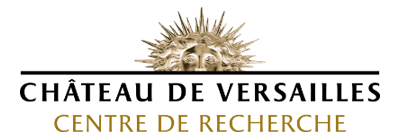
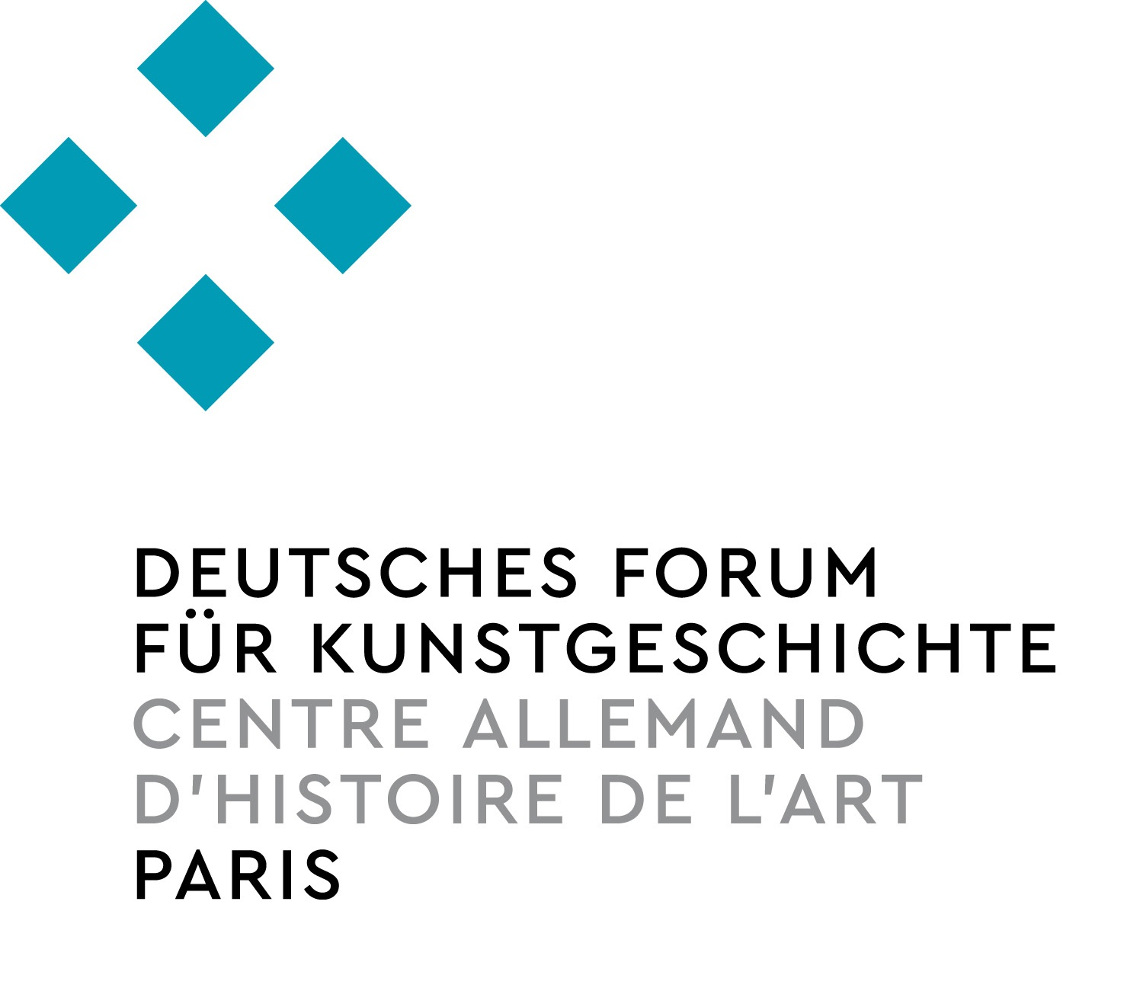
Artistic mobility in the modern era: 17th and 18th centuries
International conference
Co-organized by the DFK Paris and the Université Grenoble Alpes/LARHRA
Location: German Center for Art History (DFK Paris), Paris, France
Date: October 27 and 28, 2022
Contact: marlen.schneider@univ-grenoble-alpes.fr
The spatial turn has greatly impacted our understanding of certain artistic phenomena. It has, among other things, allowed for a reassessment of the geography of art, one that should nonetheless be updated and nuanced: Thomas DaCosta Kaufmann and many others have exposed the possibilities for a history of art that offers a “new geography,” which challenges in particular old geographical concepts of space as something stable, immutable, and constant. On the contrary, through a juxtaposition of the spatial dimension of art (geography) and its temporal dimension (history), the boundaries that we tend to draw between different cultural, political, and even national spaces prove to be in motion, in a continual dynamic evolution. The question of identity arises, of the characteristics and spatial confines of a school, a style, etc. that was forged in a certain local context, such as a city, a court, or a country, and to which must be added the many inspirations that have come from other spaces over time, due to the circulation of ideas, objects, and people.
In order to better understand this spatial complexity of artistic production in the modern era, it is necessary to carefully consider the mechanisms and issues of one of its principal drivers: artistic mobility, including the circulation of objects as well as of people. While several recent studies concerning the art market and collecting practices have illuminated certain aspects of the mobility of objects on an international and even a global scale, the mobility of artists has not yet been the subject of a systematic and comprehensive examination for the 17th and 18th centuries. Recent research has been focusing on specific phenomena, geographical contexts and artistic groups, such as artistic mobility from and to the Netherlands, the travel to Italy, the Schildersbent in Rome, artists in exile during the French Revolution, or Huguenot artists and craftsmen in Britain.
The conference seeks to bring together and to extend these different geographical and thematic approaches to artistic mobility, in order to identify their general mechanisms, local particularities, and overall methodological problems: How does the analysis of the mobility of artists in the modern era enable us to shape the cartography of art differently? Studying the mobility of artists calls into question our criteria for classifying artistic agents and objects and ascribing them a geographical and cultural identity. The movements of artists, their journeys between different countries and cultural centers, necessitate that we think in new terms: instead of a single national identity, the concept of multiple identities – already much discussed for the contemporary period – could be useful. In some cases, it might also be appropriate to speak of deracinated identities, which can result from or generate difficulties to adapt to foreign places, cultures and work conditions. How, then, might we establish patterns of interpretation that take into account these multiple and hybrid identities resulting from artistic journeys and practices across borders?
We welcome proposals that engage these questions through case studies, which can range from the individual journey of a single artist to veritable group movements – whether within the same country, within Europe, or on a global scale. The various motives for the movements of artists will be explored – training, exploitation of a new market, political migration – along with the impact of these circulations on the careers and production of artists. The purpose is to contribute to the social history of artists in the modern era and to better understand the practical conditions of this mobility before 1800, when the means of transportation and communication and the political and societal structures at times created a difficult and restrictive environment for artists on the move. The conference will also be an opportunity to discuss the contribution of digital humanities to the analysis and visualization of the routes, stages, and networks of mobile artists. One particular stake of the study of artistic mobility is to finally make known hitherto overlooked figures: too often, artists in movement do not appear in historiographical accounts; they escape traditional categories of classification and find little visibility. In turn, certain established art-historical hierarchies can be challenged, for example those linked to a fixed cartography of art or those that still distinguish between “high art” and “low art”, between canonical artists and marginalized figures.
Proposals are due by: April 30, 2022
Papers can be presented in French or English (about 20 minutes); proposals (maximum of 800 words) and a short curriculum vitae should be submitted to: marlen.schneider@univ-grenoble-alpes.fr
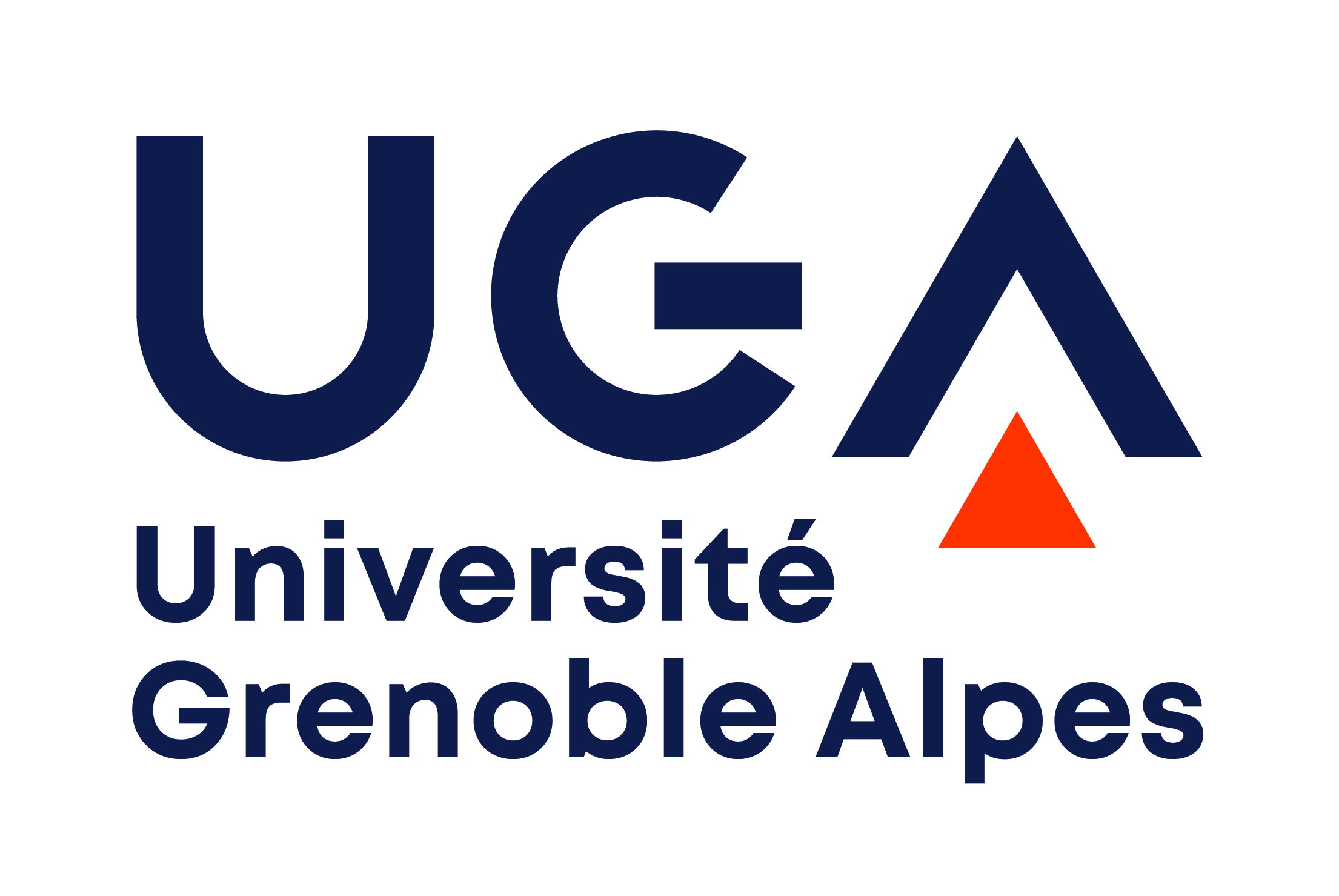
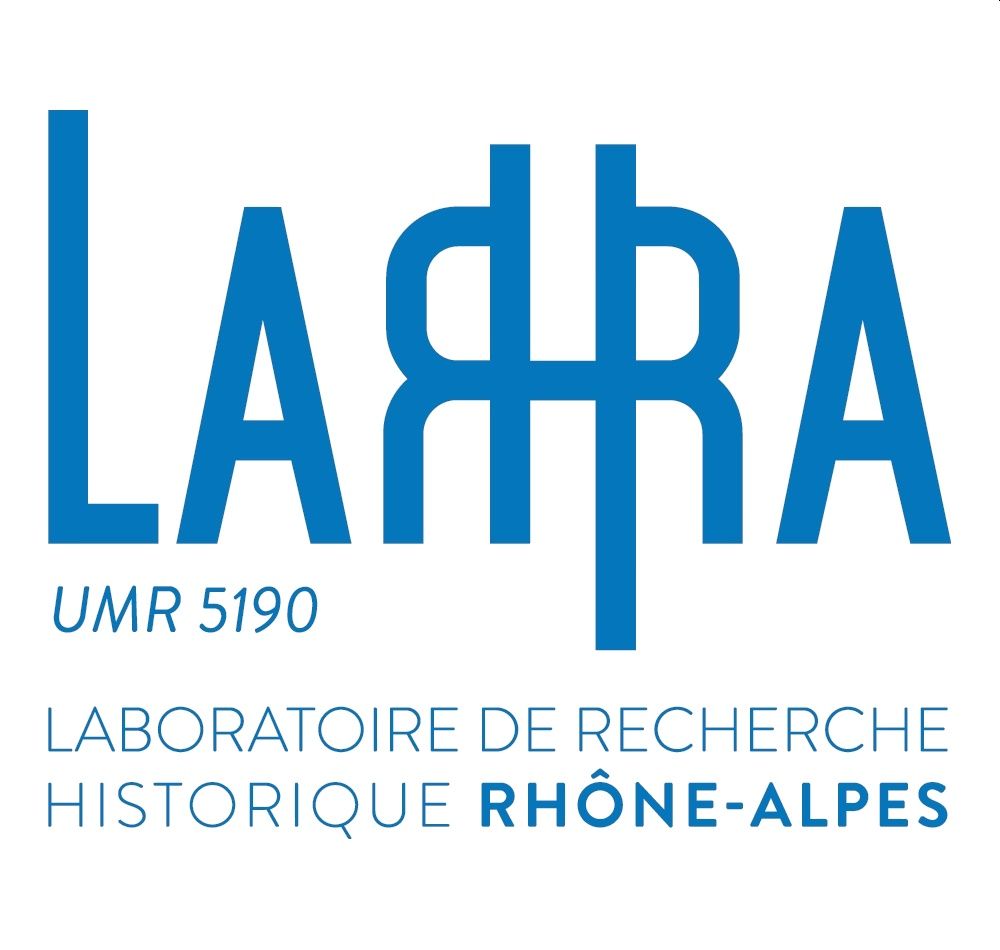
Rhythms and Resonances. Sounding Objects in the Middle Ages
Call for Papers
Conference at the German Center for Art History – DFK Paris (and online)
May 19–20, 2022
Organisation: Philippe Cordez (German Center for Art History – DFK Paris), Rebecca Müller (Karl-Ruprechts-Universität Heidelberg), and Joanna Olchawa (Goethe-Universität Frankfurt am Main)
This interdisciplinary conference is dedicated to objects from the medieval period that produce music, repetitive sounds, or tones – from bells and organs, musical instruments, and sounding automata to the coins in one’s wallet. Also crucial is the question of how such sounds are “echoed” in ornament, images, and texts. In what terms might we describe and understand the relationship of object-generated sound to sight, touch, and other senses, as well as to voice and narration? In objects and architectures, how are sounds designed, staged, and received through movements and rituals? What intentions and meanings are conveyed in this way?
Submissions are welcome from history and art history, literary studies, musicology, cultural anthropology, and the fields of Sound History and Sensory Studies. Please send an abstract, not exceeding one page in length, to pcordez@dfk-paris.org, r.mueller@zegk.uni-heidelberg.de, and olchawa@kunst.uni-frankfurt.de by January 15, 2022.
For further information please refer to this document.
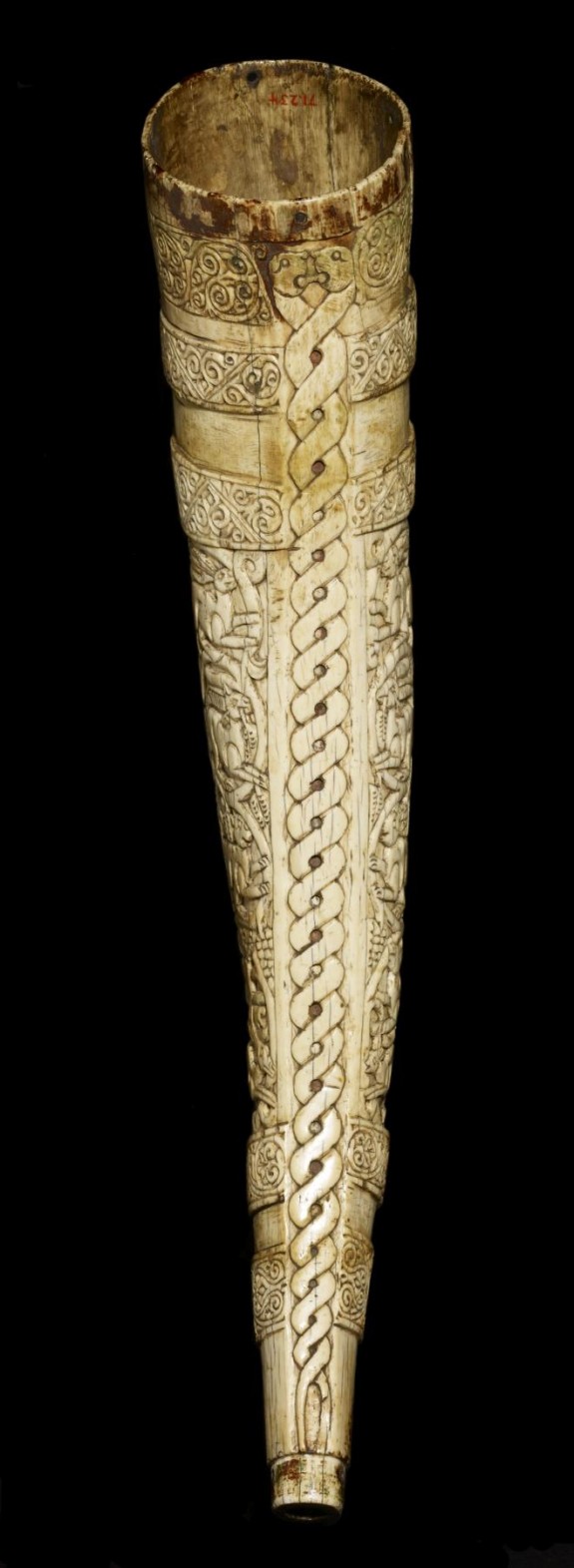 Horn, elephant ivory, Italy, 11th century, Baltimore, Walters Art Museum, © The Walters Collection
Horn, elephant ivory, Italy, 11th century, Baltimore, Walters Art Museum, © The Walters CollectionWestkunst, 1981: a Historiography of Modernism Exhibited
March 10–11, 2022, German Center for Art History Paris
The German Center for Art History Paris invites interested scholars to participate in a workshop based on the exhibition Westkunst on March 10–11, 2022.
Interested scholars are requested to submit an abstract (max. 400 words) of a possible contribution and a short biography (max. 200 words) in German, French, or English to marnoux@dfk-paris.org and Maria.Bremer@ruhr-uni-bochum.de by November 30, 2021. Travel and accommodation costs for speakers may be covered by the DFK Paris under certain conditions.
Workshop organizers: Mathilde Arnoux (German Center for Art History Paris), Maria Bremer (Ruhr-Universität Bochum), Thomas Kirchner (German Center for Art History Paris)
In 1981 a large exhibition opened in the trade fair center in Cologne under the title Westkunst—Zeitgenössische Kunst seit 1939 (Western Art: Contemporary Art Since 1939). Organized by art critic Laszlo Glozer and curator Kasper König, the show was composed of twelve historical sections and a contemporary one entitled Heute (Today). Along with the 700–800 artworks and archival material, the exhibits included reproductions of exhibition presentations and artist studios, and nine films specially created for the event. Overall, the Western-centric survey highlighted the avant-garde and politically charged themes of “freedom” and “individual expression”.
For more information, please refer to the adjacent document at the right.
Fall Course 2021
The fall course, “Introduction to academic French and conducting research in France,” enables young German historians and art historians to discover their disciplines in French institutions.
In addition to a half-day specialized language course, the main institutions in Paris will be presented: the French National Institute for Art History (INHA), documentation from the Orsay and Louvre museums, the Kandinsky Library, and other important archives and libraries.
Lectures by experts complement visits to the various sites. Fall courses generally take place in the second half of September, with the cooperation of the German Historical Institute of Paris (DHI). Depending on the year, the course is held either at the DFK Paris or DHI.
For German researchers only.
For further information please contact:
German Center for Art History Paris, Hôtel Lully, 45 rue des Petits Champs, 75001 Paris
Dr. Julia Drost: jdrost@dfk-paris.org
German Historical Institute Paris, Hôtel Duret-de-Chevry, 8 rue du Parc-Royal, 75003 Paris
Prof. Dr. Rolf Große: rgroße@dhi-paris.fr
For further information, please follow the link to the call for applications.
Traces et représentations du passé dans les monuments et le patrimoine, XIXe–XXIe siècle (Europe-Amérique latine)
Les traces du passé constituent les buttes-témoins (des témoins) d’événements historiques à jamais révolus : elles rendent présent ce qui appartient au passé et l’incarnent de manière non intentionnelle. Elles sont parfois l’objet d’un réinvestissement symbolique qui les désigne en marques, caractérisées par une signature intentionnelle de la part d’un acteur identifiable. Ce marquage est toujours une forme d’appropriation symbolique et spatiale – a minima, un droit de présence, a maxima, l’affirmation d’une revendication – de la trace matérielle, c’est-à-dire une production de signes.
Les marques produites par les groupes sociaux et les individus sont d’une très grande variété. On peut cependant les regrouper sous deux grands types : les inscriptions graphiques ou imagées, plutôt éphémères et fragiles, et les constructions monumentales, généralement pérennes. Sans exclure les premières, nous nous intéressons ici aux formes durables, en excluant les marquages ne s’opérant pas à partir d’une trace (par exemple, un monument aux morts communal n’a que rarement de lien avec une trace ou un vestige de guerre). Ces interventions relèvent de deux grands types d’opération : la conservation, la monumentalisation et la patrimonialisation de certaines traces d’une part, la démolition ou l’effacement plus ou moins intentionnel d’autres traces d’autre part. Ainsi, patrimonialisation et démolition doivent être pensées de manière dialectique.
Le cadre géographique et temporel retenu recouvre toute l’époque contemporaine (XIXe-XXIe siècle), jusqu’à l’actualité. L’aire étudiée recouvre l’Europe dans un sens large (« de l’Atlantique à l’Oural ») et le monde ibéro-américain dans son ensemble (donc Brésil compris). Les Caraïbes sont également incluses. L’enjeu est ici d’historiciser les usages des traces et des monuments selon les périodes considérées et de les situer dans un contexte local précis afin d’en repérer d’éventuelles singularités. Le jeu des circulations, des imitations dans l’espace euro-américain fera l’objet d’une attention particulière.
CFP - Between Milan and Monza: Napoleon’s court and its international network
La création du royaume d’Italie le 17 mars 1805, dont Napoléon Ier est le souverain et Eugène de Beauharnais le vice-roi (depuis le 7 juin 1805), a entraîné la création d’une cour à Milan, capitale du royaume. Peu après le couronnement milanais de Napoléon (26 mai 1805) est publié le troisième statut constitutionnel du royaume d’Italie, qui attribue aux biens de la Couronne l’ancien palais ducal de Milan (appelé par la suite palais Royal), la villa Belgiojoso-Bonaparte, que la République italienne avait rachetée aux héritiers de l’ancien propriétaire, et la villa Royale de Monza, édifiée comme résidence d’été de la cour des Habsbourg pendant les dernières décennies de l’Ancien Régime. Ce colloque international se propose d’analyser différentes questions liées à la présence de la cour napoléonienne à Milan et à Monza dans les domaines de la politique, du cérémoniel, de l’architecture et des arts, en relation également avec ce qui se produit au cours de ces mêmes années à Paris et dans le reste de l’Europe.
Le colloque est organisé par le Centre de documentation des résidences royales de Lombardie, le Centre allemand d’histoire de l’art Paris et le palais Royal de Milan, en collaboration avec l’Université catholique du Sacré-Cœur de Milan et l’École polytechnique de Milan et en partenariat avec la Fédération Européenne des Cités Napoléoniennes. Il s’inscrit dans le cadre des initiatives culturelles prévus durant l’année 2021 à l’occasion du bicentenaire de la mort de Napoléon Bonaparte. Il se déroulera à Milan, en présence et en vidéoconférence (DUAL MODE), dans la salle des conférences du palais Royal, les 14 et 15 octobre 2021.
For further information, please visit the following site.
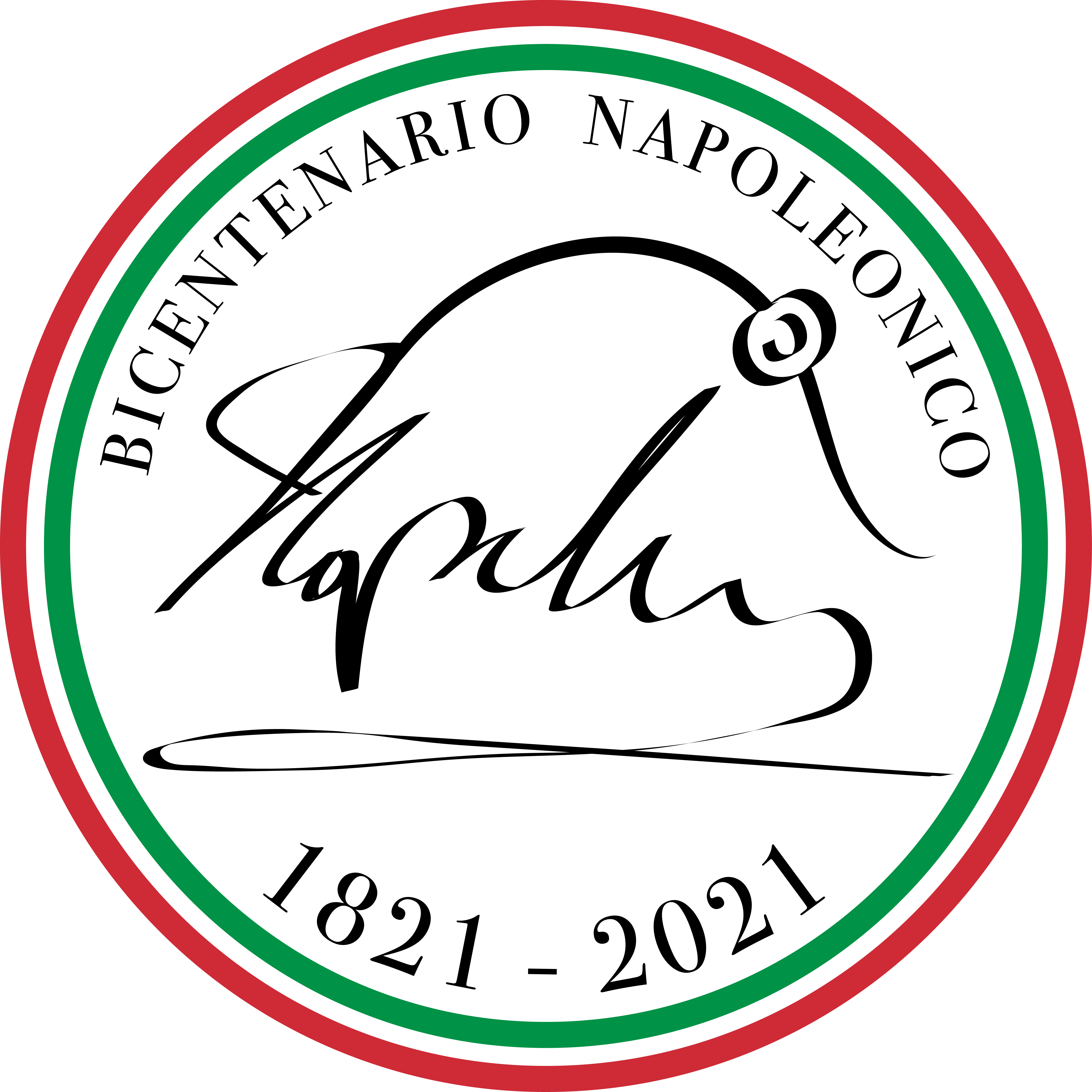
SURREALISMS PARIS 2022
DUE TO COVID 19 "SURREALISMS PARIS 2020" HAD TO BE POSTPONED TO FALL 2022
Organized by the American University of Paris, German Center for Art History Paris (DFK Paris), Université Lyon-Saint-Étienne, and Université Sorbonne Nouvelle-Paris 3.
Application deadline:
Spring 2022 (please see upcoming call for papers)
In autumn 2022, Paris will host the annual conference of the International Society for the Study of Surrealism (ISSS): https://isssparis2020.wordpress.com/
Along with academic sessions and roundtables, the conference will include film screenings, poetry readings, and exhibitions.
For further information, please download the following document
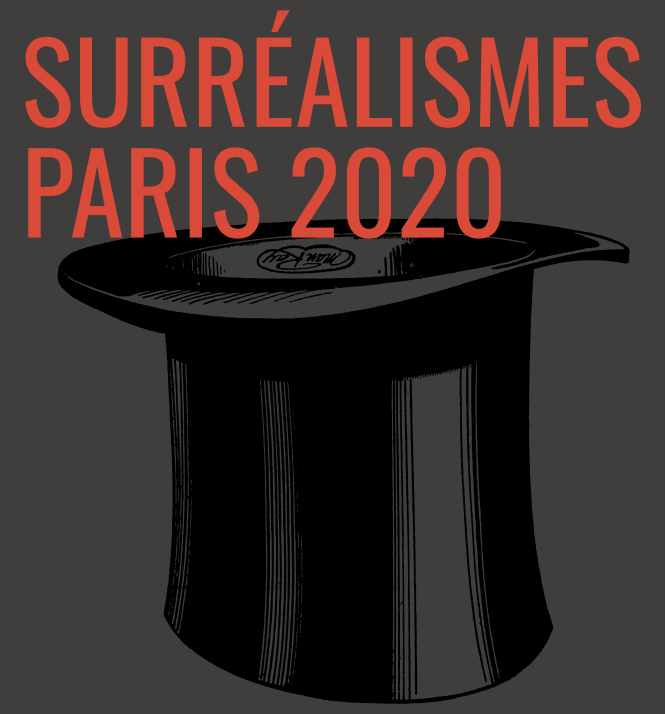
The Sensory Experience in 18th Century Art Exhibitions
Deadline 15 december 2019
Please download the document « Expérience sensorielle au XVIIIe siècle ».
Call for Applications: International Study Course
The Paris World Fairs – (Re-) Productions of Art and Fashion
19th March 2020
Organized by the Deutsches Forum für Kunstgeschichte (DFK Paris) in cooperation with the Technische Universität Darmstadt
Application deadline:
31 October 2019
CFP: Fall Course 2019
Einführung in die Wissenschaftssprache Französisch und in die Forschungspraxis in den Geschichtswissenschaften und der Kunstgeschichte
Organisiert vom Deutsche Forum für Kunstgeschichte Paris (DFK Paris) und dem Deutschen Historischen Institut Paris (DHI Paris)
Grundkurs: 16.–20. September 2019
Verlängerter Kurs: 16.–24. September 2019
Ort: DHI Paris
Bewerbungsschluss: 2. Mai 2
Der Bewerbung ist neben einem Motivationsschreiben und der Angabe, ob der Grundkurs oder die Verlängerung um zwei Tage gewünscht wird, ein tabellarischer Lebenslauf beizufügen.
Die Bewerbungen sind bis zum 2. Mai 2019 per Email in einer PDF-Datei an das DFK Paris (für Forschende aus dem Fach Kunstgeschichte: herbstkurs@dfk-paris.org) bzw. DHIP (für Forschende aus dem Fach Geschichte: herbstkurs@dhi-paris.fr) mit dem Betreff »Herbstkurs« zu richten.
Auskünfte erteilen:
Deutsches Historisches Institut Paris, Hôtel Duret-de-Chevry, 8 rue du Parc-Royal, 75003 Paris
Dr. Mareike König: mkoenig@dhi-paris.fr
Deutsches Forum für Kunstgeschichte Paris, Hôtel Lully, 45 rue des Petits Champs, 75001 Paris
Dr. Julia Drost: jdrost@dfk-paris.org
Die vollständige Ausschreibung finden Sie auf dieser Seite.
There is no working template for this Box.
Internationaler Studienkurs: Synästhetische Sakralräume? Ornamentkulturen der Gotik und ihre Rezeptionen im 19. Jahrhundert
Ausschreibung
24. – 28. Juni 2019
Organisiert vom Deutschen Forum für Kunstgeschichte (DFK Paris), der Université Rennes 2 und der Freien Universität Berlin
Bewerbungsfrist:
17. März 2019
Kirchenbauten prägten in der Gotik mit ihrer alles überragenden Architektur maßgeblich den Charakter mittelalterlicher Städte und stellten einen zentralen Bezugspunkt urbaner Identität dar. Abgesehen von seiner Außenwirkung ist der gotische Sakralbau ferner auch als ein vielschichtiger und spannungsreicher Mikrokosmos zu verstehen, in dem Liturgie, Architektur, Objekte und Bilder in einer komplexen Beziehung neben- und zueinander stehen. In diesem Kontext ist das Ornament nicht als Beiwerk, sondern im mittelalterlichen Sinne des zentralen Begriffs „ornamentum“ zu verstehen, das sich im Sakralraum vom Kelch über die Glasfenster bis zur Glocke erstreckte.
Jene Ornamentkulturen des mittelalterlichen Kirchenraumes erfahren innerhalb der Hochkonjunktur der Gotikrezeption im 19. Jahrhundert eine vielfältige Transformation. Paradigmatisch hierfür steht Victor Hugos Roman Notre-Dame de Paris (1831), der die Kathedrale nicht nur als steinernes Kompendium von Traditionsüberlieferung vermittelt, sondern deren sinnlich erfahrbare synästhetische Qualität, deren Orgel- und Glockenklänge herausstellt. Einen Widerhall findet dieser Topos des Zusammenwirkens verschiedener Sinneswahrnehmungen in der sich im 19. Jahrhundert formierenden wissenschaftlichen Disziplin der Kunstgeschichte. So fällt beispielsweise Émile Mâles grundlegende Darstellung der Kathedrale als umfassende Enzyklopädie aus dem Jahr 1898 mit der Begeisterung für das Phänomen der Synästhesie am Ende des 19. Jahrhunderts zusammen. Auch die Kunstgewerbe-Bewegung orientierte sich mitunter deutlich an mittelalterlichen Erzeugnissen und erschuf vielgestaltige Mikroarchitekturen.
Der internationale fünftägige Studienkurs nimmt mit dem hochmittelalterlichen Sakralraum, den Ornamentkulturen der Gotik sowie ihren differierenden Rezeptionen und Transformationen im langen 19. Jahrhundert ein komplexes Themenfeld der französischen Kunst- und Kulturgeschichte in den Blick. Über die Auseinandersetzung mit der Architektur, Bildern und Objekten hinaus werden wichtige Impulse in der Literatur und den Geisteswissenschaften verhandelt.
Voraussetzung für die Teilnahme am Studienkurs sind aktive Deutsch- und Französischkenntnisse (punktuell kann auch auf die englische Sprache zurückgegriffen werden) sowie die Präsentation eines 15-minütigen Impulsreferats mit anschließender Diskussion vor Ort. Die Referatsthemen werden den Teilnehmer/-innen zugeteilt, darüber hinaus sind Vorschläge willkommen.
Ihre vollständigen Bewerbungsunterlagen (ein Motivationsschreiben von nicht mehr als 2 Seiten, ein Empfehlungsschreiben einer Dozentin oder eines Dozenten sowie einen tabellarischen Lebenslauf mit Nachweis der bisherigen Studienleistungen) richten Sie bitte bis zum 17.März 2019 mit dem Stichwort » Internationaler Studienkurs 2019/Atelier de recherche international 2019 « an: ateliersderecherche@dfk-paris.org
Für weiterführende Informationen steht Ihnen Marthje Sagewitz (msagewitz@dfk-paris.org) gerne zur Verfügung.
Die vollständige Ausschreibung finden Sie auf dieser Seite.
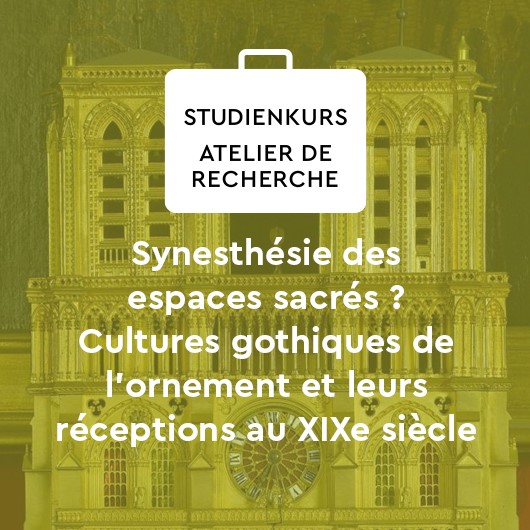

Spaces of Art
CALL FOR APPLICATIONS (Submission Deadline January 31st, 2019)
Transregional Academy on Latin American Art III – Spaces of Art: Concepts and Impacts In and Outside Latin America
October 26th – November 3rd, 2019
Universidad Nacional Autónoma de México, Mexico City
--------------------------------------------------------------------------------
The Forum Transregionale Studien and the German Center for Art History in Paris (Deutsches Forum für Kunstgeschichte, DFK Paris, part of the Max Weber Foundation – German Humanities Institutes Abroad) and Instituto de Investigaciones Estéticas of the National Autonomous University of Mexico (UNAM) invite doctoral candidates and postdoctoral researchers in the field of art history as well as neighboring disciplines to apply to participate in a Transregional Academy that will be convened from October 26 to November 3, 2019, at UNAM, Mexico, on the theme of Spaces of Art: Concepts and Impacts in and Outside Latin America.
The working language will be English.
Applications in English must include the following documents:
- a letter of motivation (2,500 characters, incl. spaces) that clearly shows how your project fits into the current research landscape and the academy’s description,
- a short biography (1,000 characters, incl. spaces, running text) that includes information on your country of origin and current residence,
- an outline that summarizes your current research project (5,000 characters, incl. spaces),
- and the names of two academic references (no letter of recommendation required).
Please email all documents in one PDF file to artspaces@trafo-berlin.de by no later than 31 January 2019.
Contact: Dr. Botakoz Kassymbekova (Forum Transregionale Studien), Wallotstr. 14, 14193 Berlin, artspaces@trafo-berlin.de
Contact for questions related to content: Dr. Lena Bader (DFK Paris), 45, rue des Petits Champs, 75001 Paris, lbader@dfk-paris.org
For further information on the previous academies and the participating institutions, please visit:
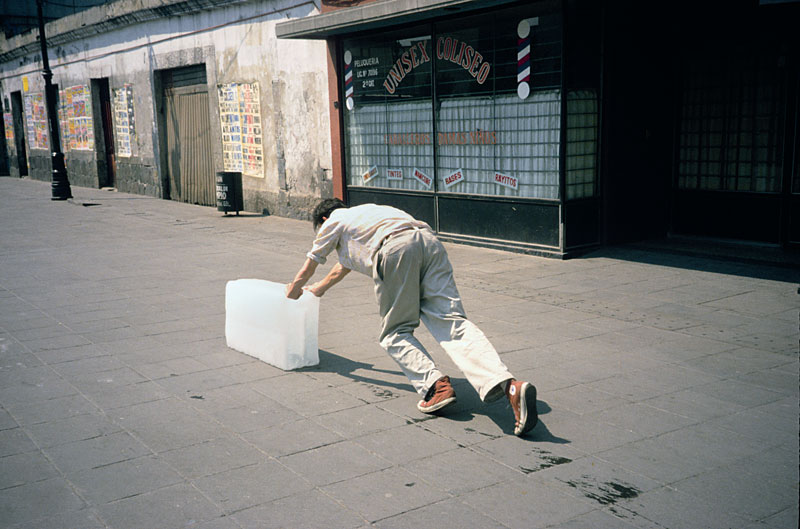 Photo: Francys Alÿs, Paradox of Praxis 1, Sometimes Making Something Leads to Nothing, Mexico City 1997
Photo: Francys Alÿs, Paradox of Praxis 1, Sometimes Making Something Leads to Nothing, Mexico City 1997Diasporic Imaginaries. Multiple Senses of Belonging
Diasporic Imaginaries. Multiple Senses of Belonging
For more information please download the CFP
Workshop
Deutsches Forum für Kunstgeschichte Paris
German Center for Art History Paris
April 4-5, 2019
Conceived and organized by Lena Bader, Birgit Mersmann, Mona Schieren
The conference will be held in English. Please send a title and abstract of your proposal (maximum 400 words) along with a short CV to the organizers of the conference: birgit.mersmann@uni-due.de, lbader@dfk-paris.org, m.schieren@hfk-bremen.de.
The deadline for submissions is 31 December 2018. The selected presenters will be notified by 31 January 2019. Selected speakers can apply for travel funding (max. 250.- Euro).
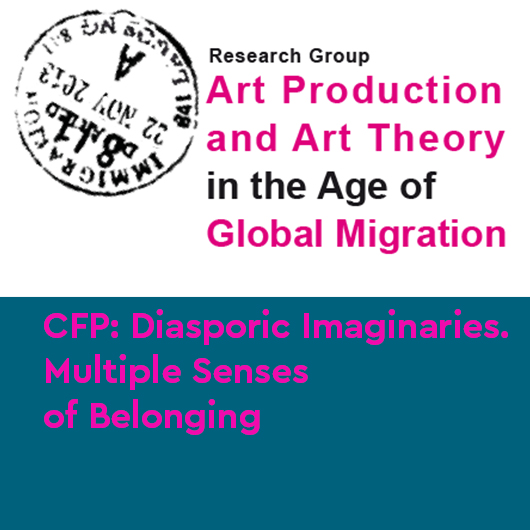
Tagung für Nachwuchswissenschaftler/-innen im Bereich der Möbel- und Raumkunst
CFP
Tagung für Nachwuchswissenschaftler/-innen im Bereich der Möbel- und Raumkunst
13. und 14. Juni 2019 in der Technischen Hochschule Köln
mobile – die Freunde von Möbel- und Raumkunst e. V. ist die Interessensgemeinschaft für alle, die sich wissenschaftlich, privat oder beruflich mit Möbeln und Raumkunst befassen. Die Aktivitäten des eingetragenen Vereins umfassen Aspekte wie Bewahren, Vermitteln und Erforschen von Möbeln und Raumkunst. Neben Seminaren und Exkursionen unterstützt mobile die wissenschaftliche Forschung, u. a. mit einer eigenen Schriftenreihe.
Um den Dialog zwischen Museumsfachleuten, Restauratoren, Kennern und dem wissenschaftlichen Nachwuchs zu fördern, organisieren mobile, das CICS - Institut für Restaurierungs- und Konservierungswissenschaft der Technischen Hochschule Köln und das Deutsche Forum für Kunstgeschichte Paris in Zusammenarbeit mit der Stiftung Preußische Schlösser und Gärten Berlin-Brandenburg eine Tagung in der Technischen Hochschule Köln. Die Tagung findet mit freundlicher Unterstützung des Kunsthauses Lempertz statt.
Mehr darüber entnehmen Sie bitte diesem Dokument
Die Bewerbungen sind bis zum 01. Februar 2019 zu richten an:
Dr. Henriette Graf
Stiftung Preußische Schlösser und Gärten Berlin-Brandenburg,
WRZ, Zimmerstr. 10-11, 14471 Potsdam
Auskünfte erteilen:
Dr. Jörg Ebeling
jebeling@dfk-paris.org
Dr. Henriette Graf
h.graf@spsg.de
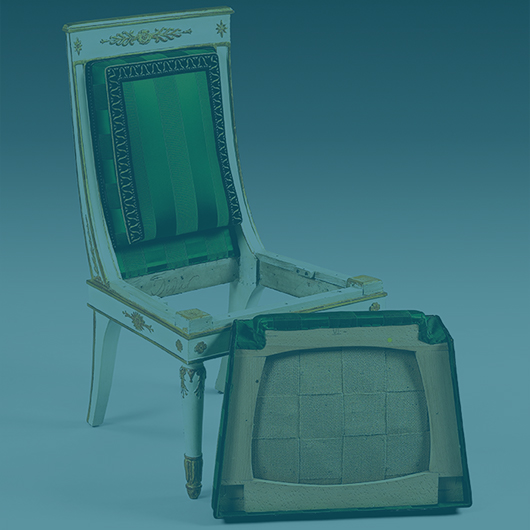 Photo: Stuhl aus dem Grünen Salon des Palais Beauharnais, zugeschrieben an Jacob-Desmalter (1770-1841), Paris, um 1804-1805 (Abb. DFK Paris, Dokumentation Palais Beauharnais © L. Blancard – N. Dubois – ArtDigitalStudio)
Photo: Stuhl aus dem Grünen Salon des Palais Beauharnais, zugeschrieben an Jacob-Desmalter (1770-1841), Paris, um 1804-1805 (Abb. DFK Paris, Dokumentation Palais Beauharnais © L. Blancard – N. Dubois – ArtDigitalStudio)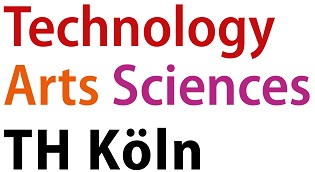
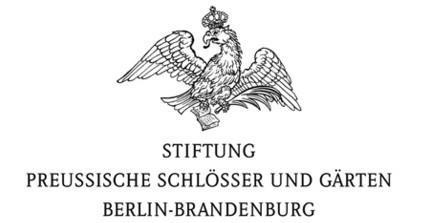
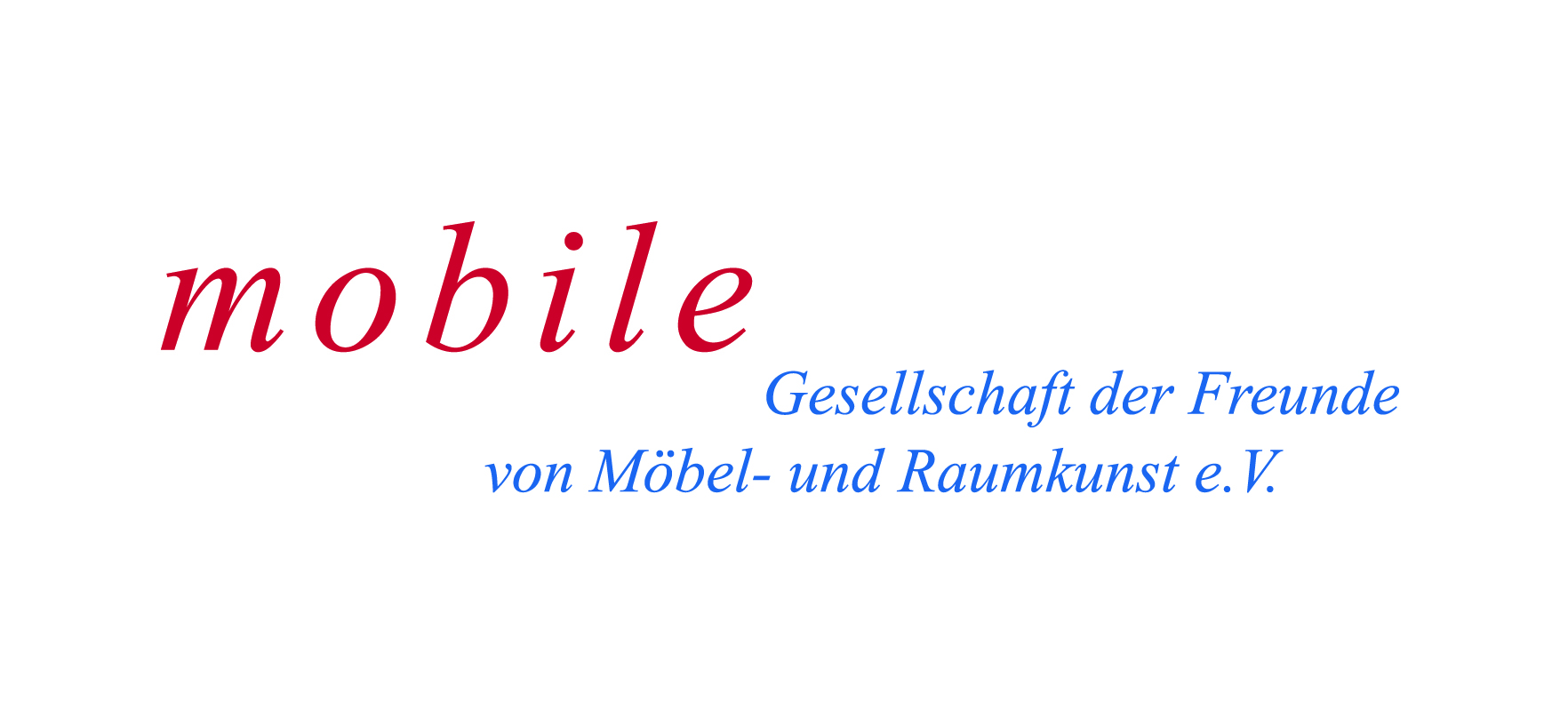
"Arts, Power, and Politics"
Call for Applications
“Arts, Power, and Politics”: Second Spring Academy for Young Chinese Art Historians at the German Center for Art History Paris
Deadline: December 16th, 2018
The German Center for Art History in Paris welcomes applications from junior scholars and doctoral students from Greater China for a spring seminar titled “Arts, Power, and Politics,” which will focus on French 17th- to 20th-century art. The seminar will take place from May 13th to May 31th, 2019 in Paris at the German Center for Art History and at several museums and research institutes in the French capital and its surroundings. Participants will receive funding for transportation, lodging, and meals.
Scholars interested in participating are invited to attend a one-day introduction to the program on March 21th, 2019, at the Central Academy of Fine Arts in Beijing, China. Limited funding is available for prospective participants who attend the Beijing meeting. Attendance at the introductory meet-ing in Beijing is not required for admission into the seminar, but is strongly encouraged.
The seminar is possible thanks to generous support from the Getty Foundation through its Connecting Art Histories initiative.
For more information please download the document Call for Applications/Spring Academy


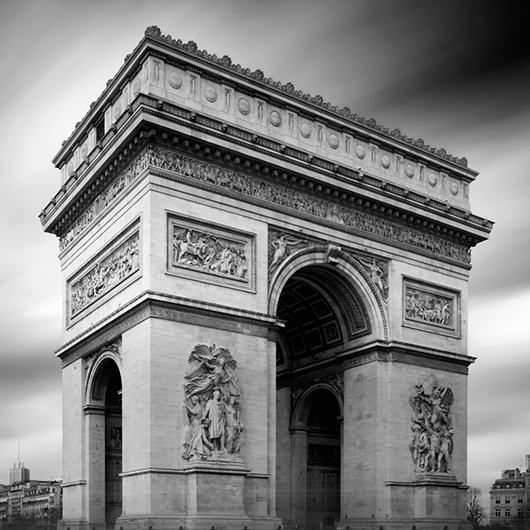 Photo: Arc de Triomphe, © Markus Schilder
Photo: Arc de Triomphe, © Markus Schilder Call for papers
V. Forum Kunst des Mittelalters – Ponti – Peaks – Passages Bern – 18.-21. September 2019
Sektion 9:
Die Brücke in der Stadt. Passagen, Bilder, Handel, 12.–14. Jahrhundert
Sektionsleitung: Philippe Cordez (Paris)
Sponsored session: Deutsches Forum für Kunstgeschichte, Paris
Plus d'information / Weitere Informationen / More information
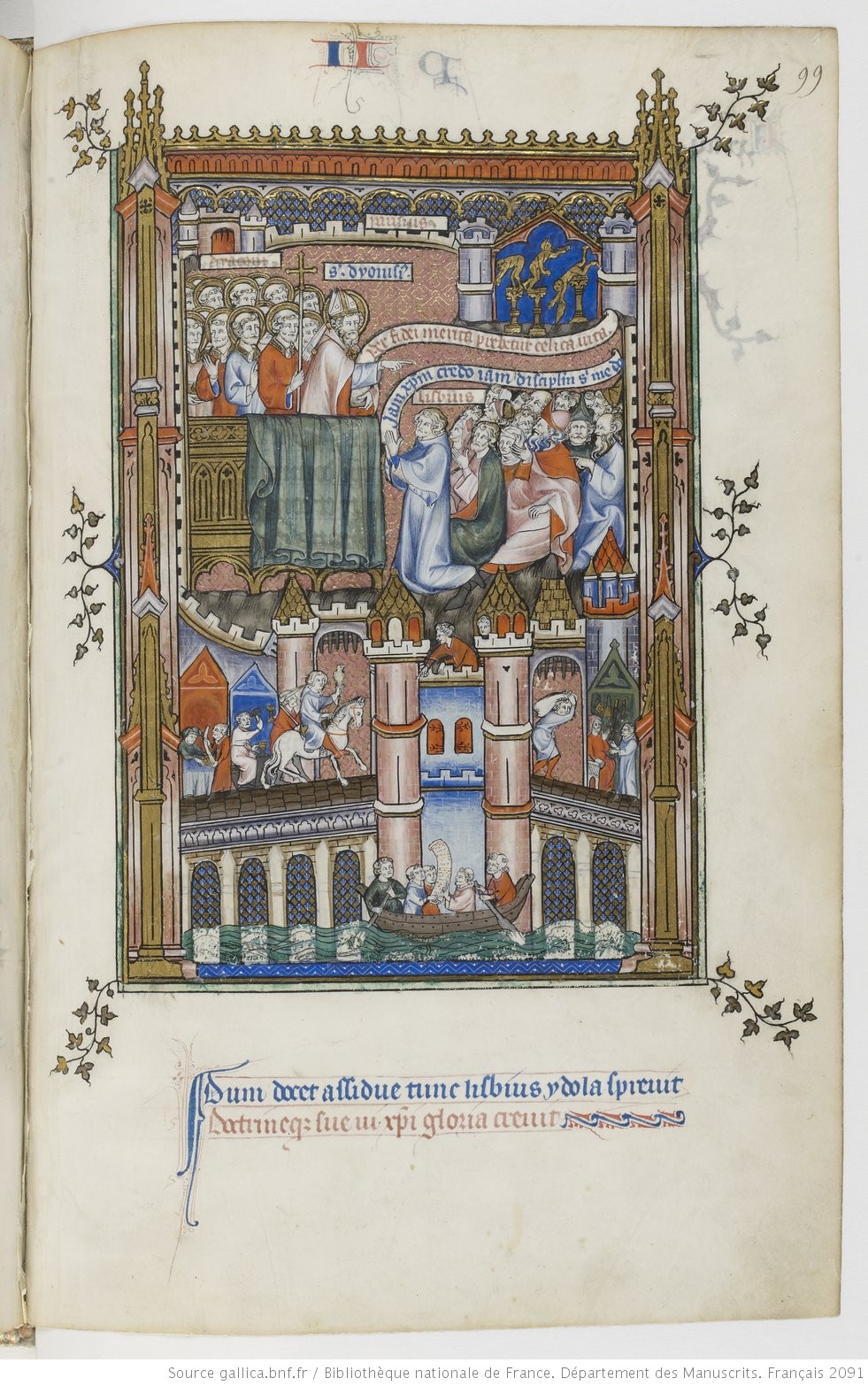 Photo: Photo: Yves de Saint-Denis, "Vita et passio sancti Dionysii", Source gallica.bnf.fr / Bibliothèque nationale de France
Photo: Photo: Yves de Saint-Denis, "Vita et passio sancti Dionysii", Source gallica.bnf.fr / Bibliothèque nationale de FranceCALL FOR PAPERS
German-French Research Program (Berlin, 8-10 November 2018; Paris, 18-20 March 2019)
Art Market and Art Collecting from 1900 to the Present in Germany and France
German-French Research Program
Berlin, Germany, 8–10 November 2018
Paris, France, 11–13 March 2019
Deadline for submissions: 14 September 2018
Refugee crises, trade wars, migration debates: within the context of global geopolitical, economic and cultural-political upheavals, Europe is presently undergoing a process of transformation. At the same time, European territorial occupations and colonial rule of the past are coming increasingly into the focus of national and transnational scholarship and the politics underlying it.
The 2018–2019 German-French Research Program organised by the Forum Kunst und Markt/Centre for Art Market Studies of the Technische Universität Berlin and the Centre Georg Simmel of the Paris-based École des Hautes Études en Sciences Sociales in cooperation with the Deutsches Forum für Kunstgeschichte Paris responds to these dynamics. The program’s thematic emphasis is research into the art market and art collecting in national and transnational networks in Germany and France as well as how they relate to art and cultural policy from 1900 to the present. This historical timespan encompasses two world wars, occupations, world economic crises, stock market crashes, economic miracle years, the Cold War, the founding of the European Union, the fall of the Berlin Wall and, not least importantly, the above-mentioned crises of the present.
The chief aim of the program – which is being carried out with financial support from the Université franco-allemande/Deutsch-Französische Hochschule (UFA/DFH) – is to network doctoral and post-doctoral scholars currently carrying out research on the art market, museums and collecting in the contexts described above across national and discipline boundaries. To this end, it provides them with opportunities to present their research at conferences in Berlin and Paris and enter into exchange with experts and specialists in the respective countries, as well as access to museum and research “labs”, auction houses, galleries and archives.
The prerequisite for the selected doctoral and post-doctoral scholars’ participation in the German-French research network is the attendance of both research conferences – the one taking place in Berlin (8–10 November 2018) and the one in Paris (18–20 March 2019), which build on one another – and the presentation of a twenty-minute lecture on their own research projects in the context of the program themes at one of the two conferences.
Assistance towards travel and lodging expenses will be granted. Participants will be informed about the administrative modalities of the respective German-French project partners following the selection procedure.
The conference languages will be English in Berlin (conference subject: “Art Market and Art Collecting in Germany and France from 1900 to 1945”), and French and English in Paris (“Art Market and Art Collecting in Germany and France from 1945 to the Present”). Please send your application, complete with a lecture synopsis of 2,000 characters maximum, including spaces, and a CV to germanfrenchprogramme@gmail.com by 14 September 2018.
The German-French organisers will carry out the selection procedure and announce the participants by the end of September 2018.
Concept and organisation: Dorothee Wimmer, Elisabeth Furtwängler (Centre for Art Market Studies/TU Berlin), Denise Vernerey-Laplace, Hélène Ivanoff (Centre Georg Simmel/EHESS, Paris), Julia Drost (DFK Paris)
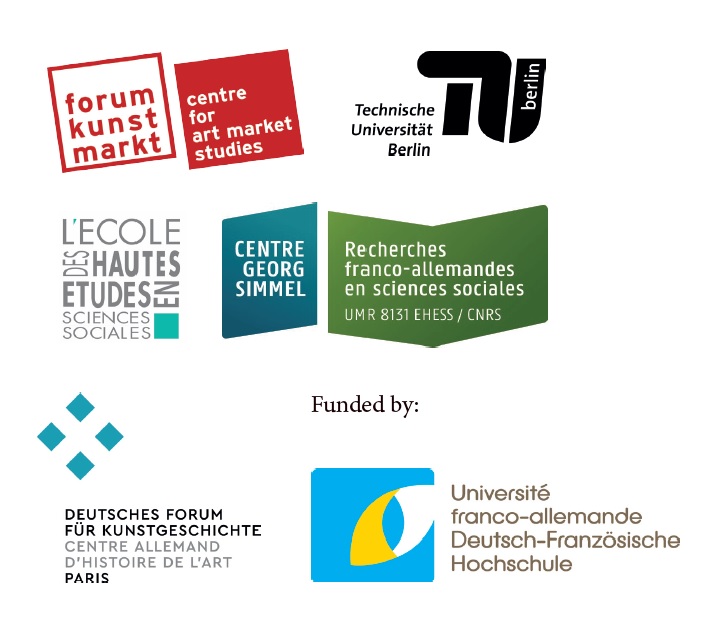 Photo: Partner of the German-French Research Program
Photo: Partner of the German-French Research ProgramSurrealismus in den U.S.A.
Netzwerke, Museen und Sammlungen.
Surrealismus in den U.S.A.
Internationale Tagung am Deutschen Forum für Kunstgeschichte in Paris (DFK Paris)
27.–29. November 2017
Mehr Informationen und CFP auf der Projektseite
_________
Networks, Museums and Collections.
Surrealism in the United States
An International Conference at the German Center for Art History in Paris (DFK Paris)
27 – 29 November 2017
For more information and CFP please c.f. to the page of the project
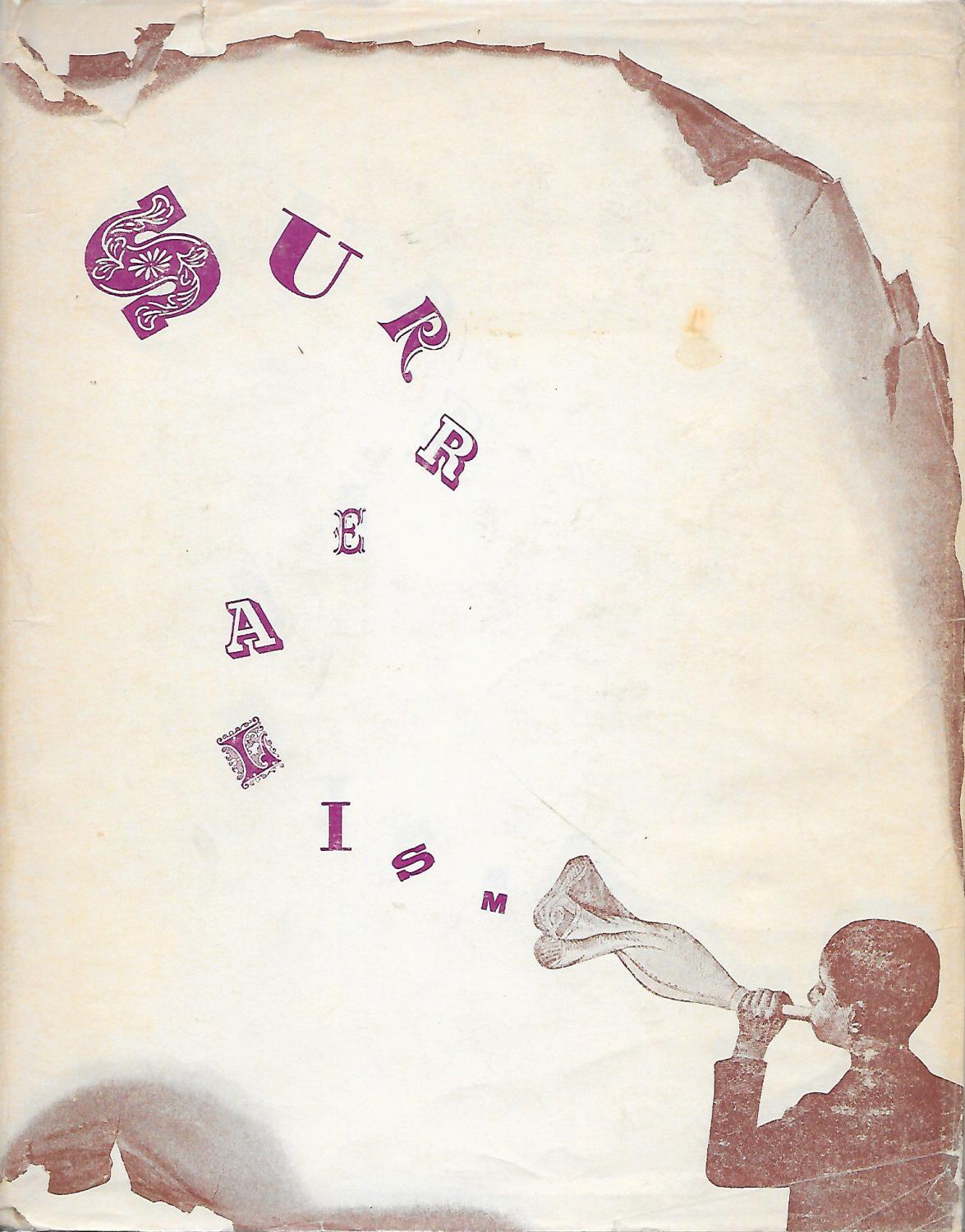 Photo: Julien Levy, Surrealism, Umschlag gestaltet von Joseph Cornell, 1936.
Photo: Julien Levy, Surrealism, Umschlag gestaltet von Joseph Cornell, 1936.Das Geschäft mit dem Wunderbaren
Das Geschäft mit dem Wunderbaren – Galerien, Sammler und Händler des Surrealismus, 1945 – 1969
Workjshop im Deutschen Forum für Kunstgeschichte,
Paris 28.-29. September 2017
Anmeldeschluss: 30.06.2017
Projektseite und Beschreibung CFP
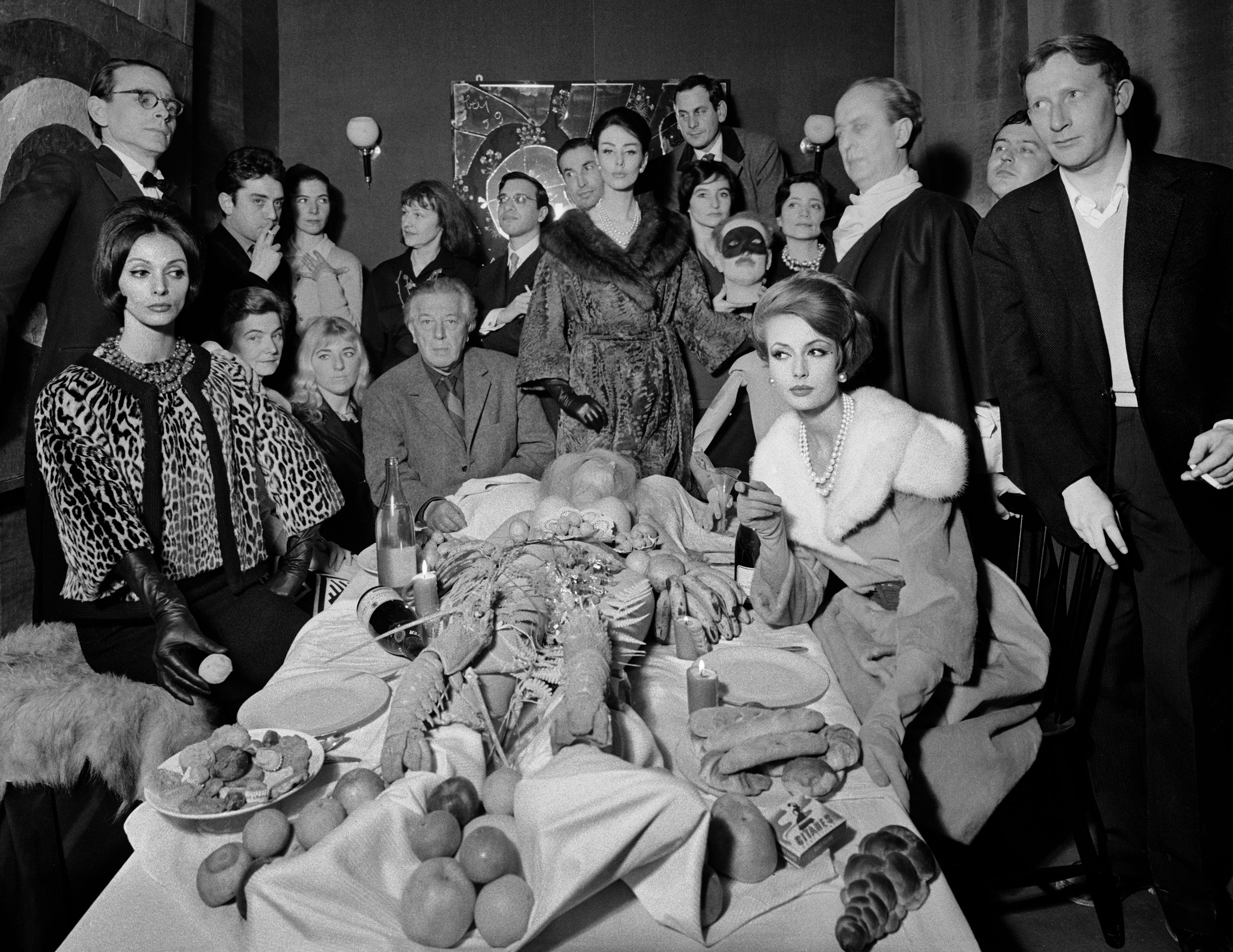 Photo: Exposition internationale du surréalisme, Eros, Galerie Cordier, 1959, Foto : William Klein
Photo: Exposition internationale du surréalisme, Eros, Galerie Cordier, 1959, Foto : William KleinEcole de printemps
Internationales Netzwerk für Kunstgeschichte
Imagination
15. Frühjahrsakademie
Universität Genf, 8.–12. Mai 2017
Bewerbungsaufruf - Deadline 20.02.2017
Die 15. Frühjahrsakademie des Internationalen Netzwerks für Kunstgeschichte wird vom 8. bis 12. Mai 2017 an der Universität Genf zum Thema „Imagination“ stattfinden. Die Akademie richtet sich an Promovierende und Post-Docs mit unterschiedlichen Perspektiven und Spezialisierungen. Gemeinsam mit weiter fortgeschrittenen Wissenschaftlern ermöglicht sie einen Austausch der Forschungen, der methodischen Ansätze und der Erfahrungen. Die Themen und Programme der vorausgegangenen Frühjahresakademien können auf der Website (www.proartibus.net) eingesehen werden. Die Teilnahme an Frühjahresakademien bildet die Voraussetzung für den Erhalt eines Zeugnisses zur internationalen, kunstgeschichtlichen Ausbildung. Magistranden, Promovierende und Habilitanden werden ermutigt, Themenvorschläge einzureichen, die mit ihrem Forschungsthema, ihrer historische Epoche, ihrem Forschungsfeld und ihrer gewünschte Präsentationsform in engem Bezug stehen.
Die vollständigen Informationen finden Sie hier.
Internationales Forschungsatelier für Nachwuchswissenschaftler/-innen der Fotografiegeschichte und -theorie:
»Paris – urbaner, institutioneller und künstlerischer Ort der Fotografie«
Paris, 3.-7. Juli 2017
Deadline: 24. Februar 2017
Organisiert vom Deutschen Forum für Kunstgeschichte – DFK Paris
in Zusammenarbeit mit der Université Paris Ouest Nanterre La Défense und der Universiteit Leiden,
gefördert von der Deutsch-Französischen Hochschule, Saarbrücken (http://www.dfh-ufa.org)
Die Bewerbungsunterlagen finden Sie auf dieser Seite.
![Léon Gimpel, Grand Prix de l’Aéro-Club à l’Esplanade des Invalides [Paris], 26. September 1909. Autochrom, 9x12cm. Collection Société française de photographie (coll. SFP). FRSFP_0806im_A_1014](https://www.dfk-paris.org/sites/default/files/grid/2017/02/08/Kachel%2C%20Foto-Paris.DE.jpg) Léon Gimpel, Grand Prix de l’Aéro-Club à l’Esplanade des Invalides [Paris], 26. September 1909. Autochrom, 9x12cm. Collection Société française de photographie (coll. SFP). FRSFP_0806im_A_1014
Léon Gimpel, Grand Prix de l’Aéro-Club à l’Esplanade des Invalides [Paris], 26. September 1909. Autochrom, 9x12cm. Collection Société française de photographie (coll. SFP). FRSFP_0806im_A_1014
Mobility
Mobility: Objects, Materials, Concepts, Actors
Buenos Aires, September 30 — October 8, 2017
Transregional Academy on Latin American Art II
Application deadline: February 28, 2017
For further information please open the following Website
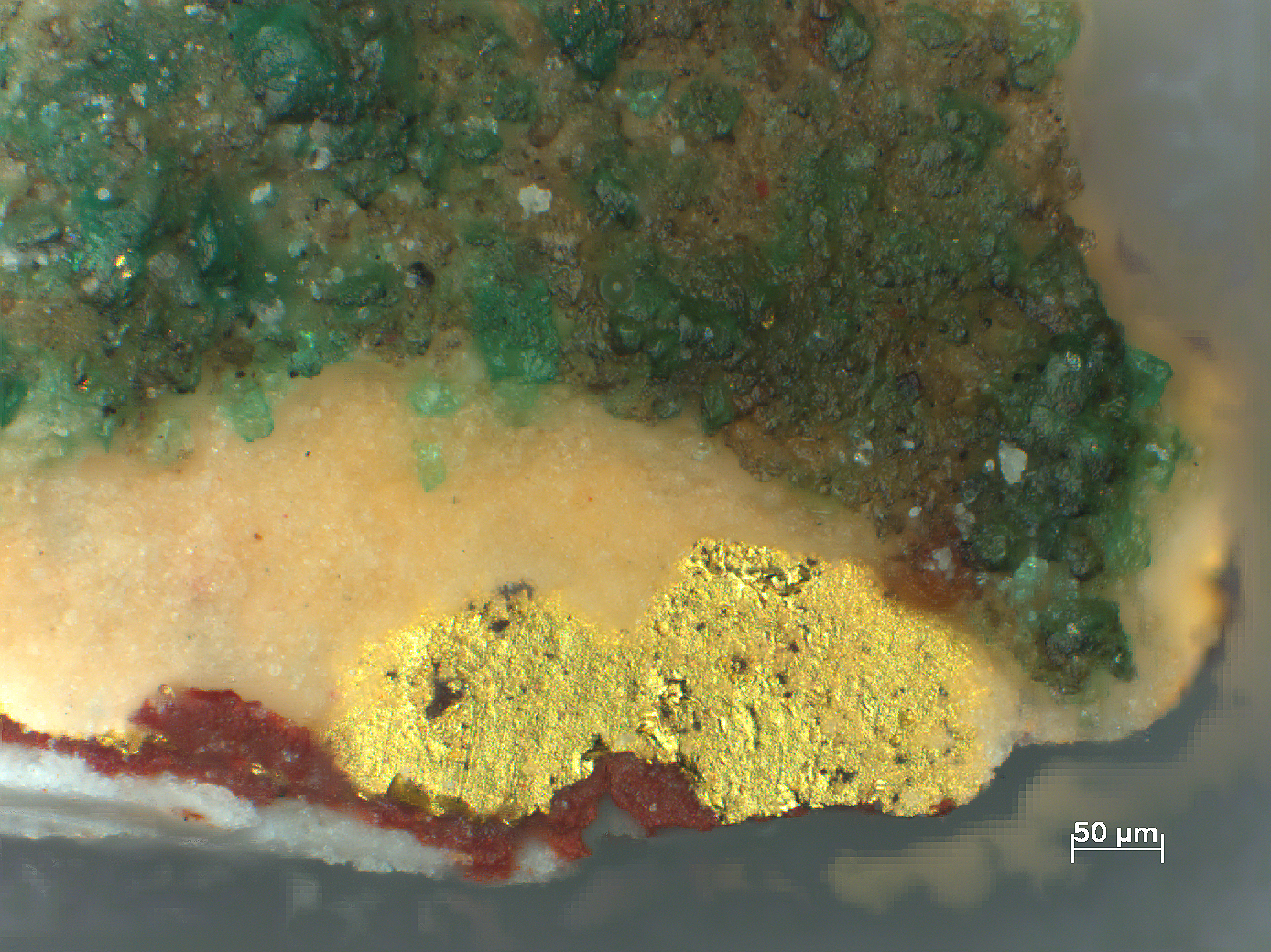 Photo: Polychromy of Our Lady of Copacabana © Siracusano, Maier and Tomasini
Photo: Polychromy of Our Lady of Copacabana © Siracusano, Maier and Tomasini 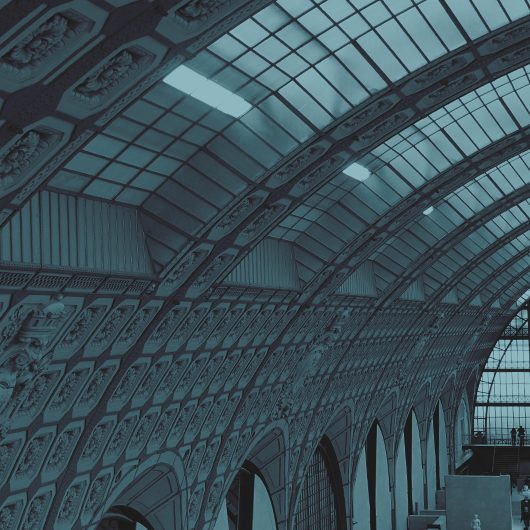
Spring seminar for Chinese scholars
Call for applications: “Paris – Capital of Modernity”. Spring seminar 2017 in Paris
The German Center for Art History in Paris welcomes applications from junior scholars and doctoral students from Greater China for a spring seminar titled “Paris – Capital of Modernity,” which will focus on French 19th- and 20th-century art. The seminar will take place from May 9th to May 26th, 2017 in Paris at the German Center for Art History and at several museums and research institutes in the French capital. Participants will receive funding for transportation, lodging, and meals.
Scholars interested in participating are invited to attend a two-day introduction to the program on March 23th and 24th, 2017, in Beijing, China. Limited funding is available for prospective participants who attend the Beijing meeting. Attendance at the introductory meeting in Beijing is not required for admission into the seminar, but is strongly encouraged.
The seminar is possible thanks to generous support from the Getty Foundation through its Connecting Art Histories initiative.
Paris – Capital of Modernity
Paris serves as an outstanding example of Western modernism, since the city met the challenges that came with industrialization and developed a new infrastructure. The seminar’s temporal scope will be defined by the first and last world’s fairs in Paris: 1855 and 1937. The 1855 world’s fair marked the beginning of a new era, which dedicated itself to modernity; the exhibition of 1937—with, among other aspects, the strengthening of totalitarian systems on the eve of World War II and its decidedly anti-modern self-representation—marks its end.
With the electrification of the city and the construction of the metro system, Paris created the infrastructure of a smoothly running modern metropolis. Modern Art flourished in Paris, and the influence of the avant-garde can still be seen today in the neighborhoods of Montmartre and Montparnasse as well as in the city’s many museums devoted to modernism. Along with visits to Montmartre and Montparnasse, the seminar will include special visits to such museums as the Petit Palais, the Musée d’Art Moderne de la Ville de Paris, the national Musée d’Orsay, and the Musée National d’Art Moderne in the Centre Georges Pompidou. These trips will be guided by specialist scholars and curators.
The academic content of the program will be presented through lectures and discussions held at the German Center for Art History and through the aforementioned visits to museums, where original works of art will be examined and discussed. Additional site visits will include guided walks through Paris designed to help to contextualize modernity within the city itself.
The seminar’s co-directors are Thomas Kirchner (Director of the German Center for Art History in Paris) and Godehard Janzing (Deputy Director of the German Center for Art History in Paris). Lecturers include Hollis Clayson (Northwestern University) and Jean-Louis Cohen (New York University).
The seminar aims to facilitate dialogue between participants, lecturers, museum curators and members of the German Center for Art History in Paris and to enrich and strengthen study of French Art in China.
For further information please download the document Spring seminar for Chinese scholars
Curatorial Studies
Ausschreibung, Studienreise „Curatorial Studies – Wechselseitige Perspektiven“ (Paris)
27.- 31. März 2017
Frist: 31. Dezember 2016
Organisiert vom Deutschen Forum für Kunstgeschichte – DFK Paris (https://dfk-paris.org) in Kooperation mit dem Masterstudiengang „Curatorial Studies – Theorie – Geschichte – Kritik“ der Johann Wolfgang Goethe-Universität Frankfurt (http://www.kuratierenundkritik.net) und gefördert durch die Deutsch-französische Hochschule – Université franco-allemande, Saarbrücken (http://www.dfh-ufa.org)
Die fünftägige Studienreise rückt Ausstellungshäuser und Museen ins Blickfeld als Orte, die spezifisch ästhetische Weisen der Erkenntnis ermöglichen und Bedeutung mit anderen Mitteln generieren als literarische oder wissenschaftliche Produktionen. Die Art, wie Ausstellungen und Sammlungspräsentationen kuratiert sind, hat wesentlichen Anteil an der Rezeption und Deutung von Kunstwerken und Artefakten. Ausstellungen verhandeln in der Öffentlichkeit Befindlichkeiten, Identitäten, Provokationen und diskursive Grenzen. Insbesondere sind Museen und Ausstellungshäuser zentrale Orte, um Kategorisierungen zu institutionalisieren: Aufnahme, Integration und Ausschluss werden als Argument im Raum sichtbar gemacht.
Sind Narrative und Kanonbildungen erst einmal institutionalisiert, braucht es Jahrzehnte bis zu ihrer Revision.
Ausstellungsbesuche und Diskussionen mit den verantwortlichen Kuratoren vor Ort sowie Fachvorträge und gemeinsame Textlektüren geben 15 Teilnehmer/-innen aus Deutschland und Frankreich Gelegenheit, zentrale größere sowie kleinere Ausstellungsinstitutionen in Paris kennenzulernen und Fragen des Kuratierens, Displays und der Kanonbildung zu diskutieren.
Zwei Problemfelder werden fokussiert: 1) adäquate Präsentationsformen von Kunstwerken und anderen musealen Artefakten, 2) das Museum als Kanonisierungsinstanz. Dabei werden vergleichend die spezifischen Ansätze und Vorgehensweisen in der deutschen und französischen Museumslandschaft im internationalen Kontext herausgearbeitet.
Die Studienreise richtet sich vorwiegend an Doktorand/-innen, Postdoktorand/-innen und Masterstudierende aus den Bereichen Curatorial Studies, Kunstgeschichte, Ethnologie, Museums- und Kulturwissenschaften.
Vorausgesetzt werden souveräne Deutsch- und Französischkenntnisse sowie die Übernahme eines 15-minütigen Kurzreferats. Studierende, Doktorand/-innen und Postdoktorand/-innen, die kein Auslandsstipendium erhalten oder die keine Einkünfte aus einem Arbeitsverhältnis von mehr als 50 % beziehen, können dank Förderung durch die Deutsch-französische Hochschule einen Zuschuss zu den Reisekosten in Höhe von bis zu 200 € sowie zu den Übernachtungskosten in Höhe von bis zu 300 € beantragen. Der Antrag auf Zuschuss (schriftlich, unter Darlegung der Einkommensverhältnisse) muss mit der Bewerbung gestellt werden . Später können keine Anträge mehr berücksichtigt werden. Die Zahlung erfolgt gegen Vorlage der Rechnungen nach der Teilnahme an der Studienreise.
Ihre vollständigen Bewerbungsunterlagen (Motivationsschreiben, Lebenslauf, Sprachzeugnisse, ggf. Antrag auf Zuschuss) senden Sie bitte bis zum 31.12.2016 an: Dr. Julia Drost (jdrost@dfk-paris.org) und Dr. Stefanie Heraeus (Heraeus@kunst.uni-frankfurt.de). Für weiterführende Informationen stehen Ihnen Frau Drost und Astrid Köhler (akoehler@dfk-paris.org) gerne zur Verfügung.
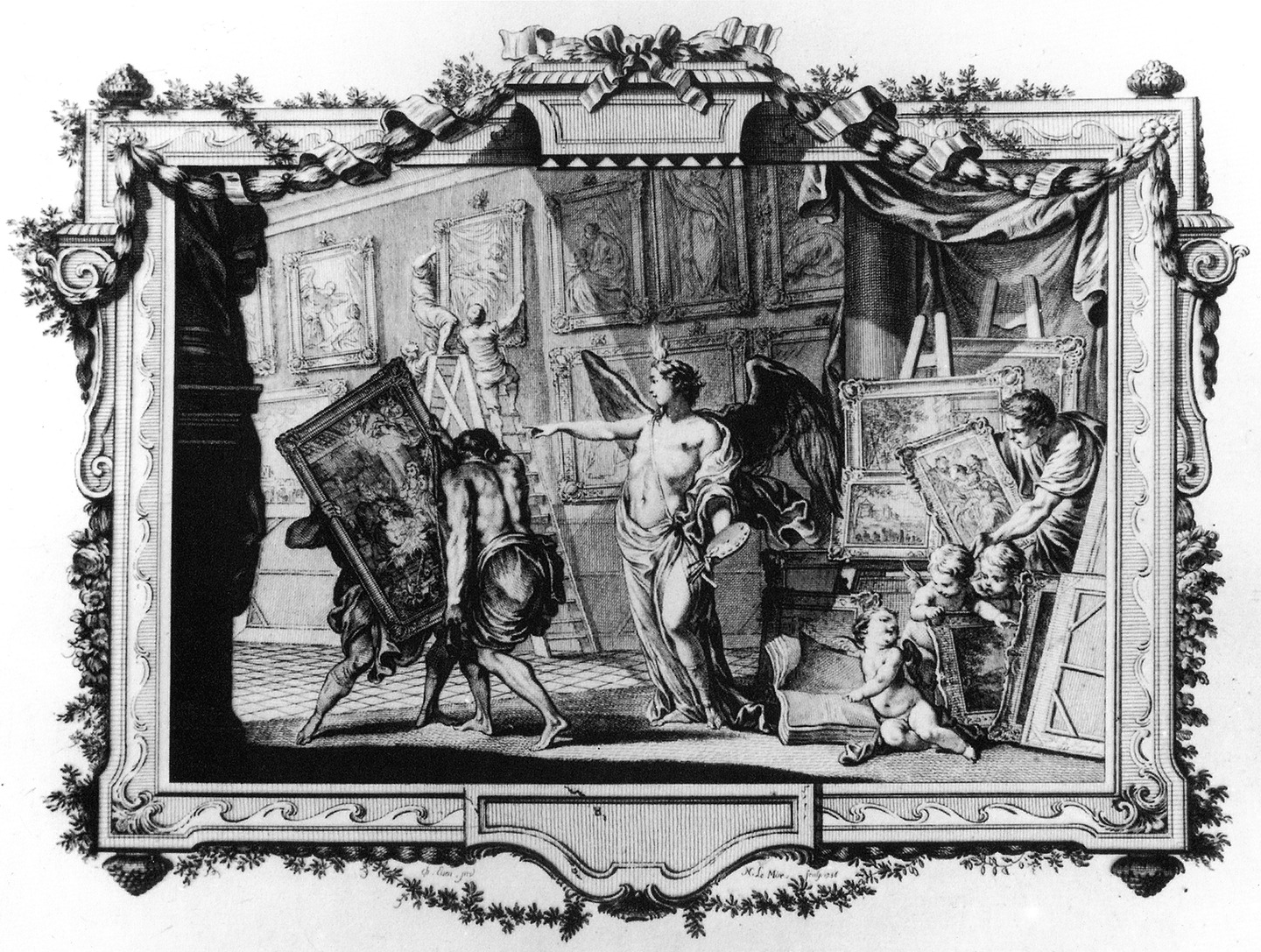
Picturesques Modernities
Architectural Regionalism as a Global Process (1890–1950)
30. November / 2. Dezember 2016
Deutsches Forum für Kunstgeschichte Paris
Konzept: Michael Falser (Universität Heidelberg)
Internationale Konferenz in Zusammenarbeit mit dem Cluster of Excellence ‘Asia and Europe in a Global Context’ (Global Art History), Deutsches Forum für Kunstgeschichte Paris, Centre de recherche interdisciplinaire en histoire, histoire de l’art et musicologie der Universität Poitiers (CRIHAM/Département d’histoire de l’art et archéologie), Centre André Chastel (CNRS/Universität Paris-Sorbonne) und Association d’histoire de l’architecture (A.H.A.).
Einsendeschluss: 15. August 2016
Weitere Informationen entnehmen Sie bitte diesem Dokument.
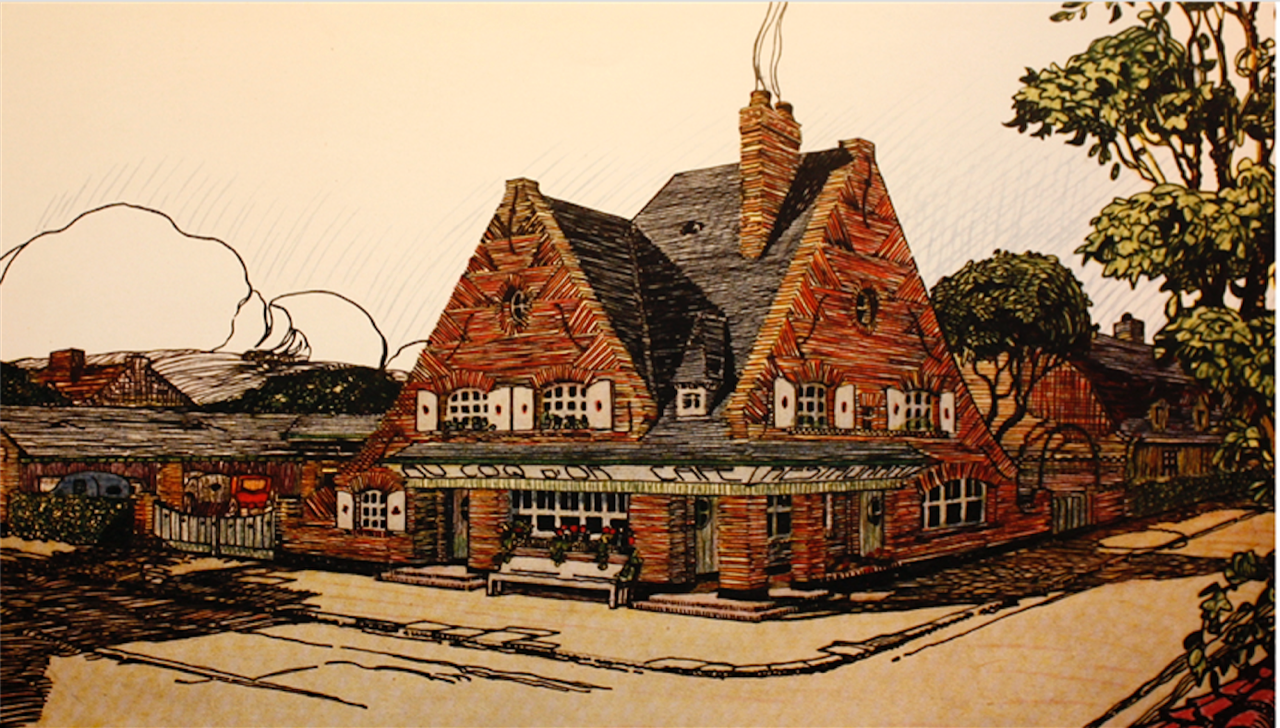 Zeichnung einer regionalistischen Architektur, mit dem Titel « Auberge dans la Somme » in Murs et toits de chez nous (1923-6), von Charles Letrosne.
Zeichnung einer regionalistischen Architektur, mit dem Titel « Auberge dans la Somme » in Murs et toits de chez nous (1923-6), von Charles Letrosne.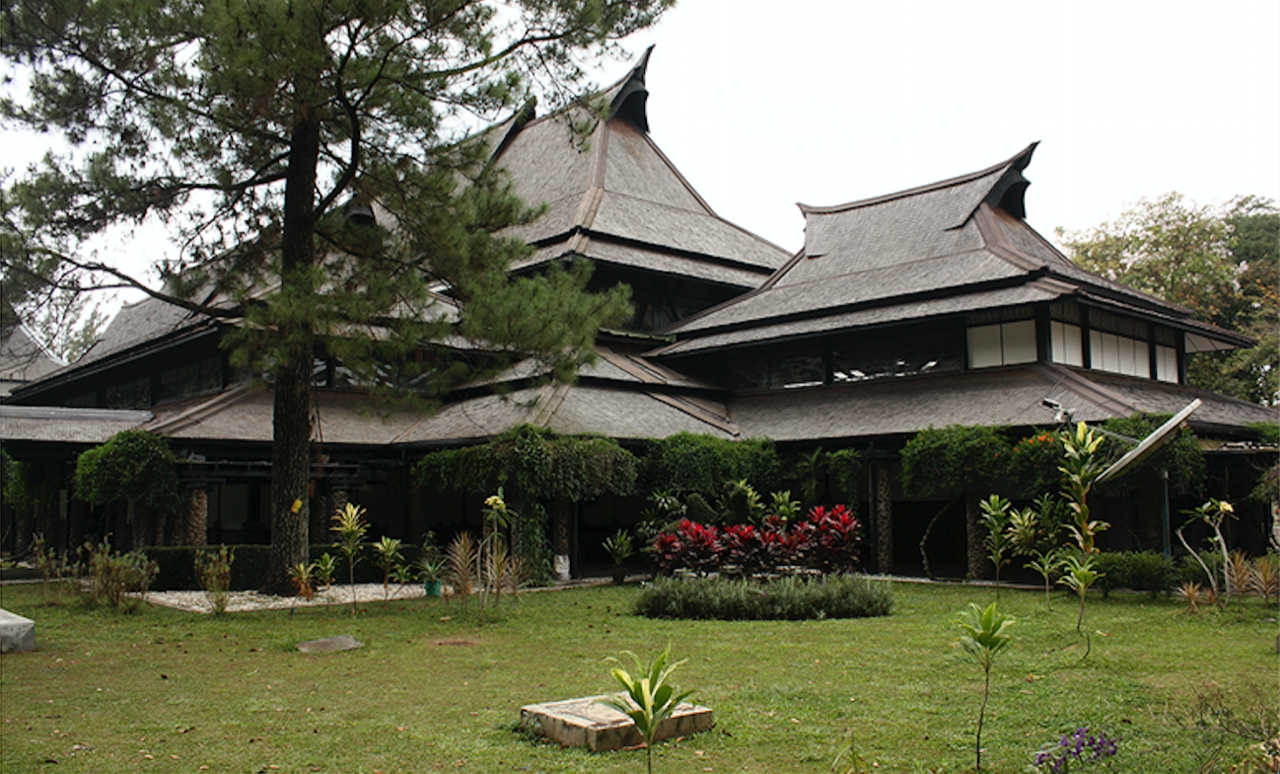 Die « Technische Hogeschool » in Bandung/Java im Niederländisch-Indien (heutigen Indonesien), Architekt: Henri Maclaine Pont.
Die « Technische Hogeschool » in Bandung/Java im Niederländisch-Indien (heutigen Indonesien), Architekt: Henri Maclaine Pont.Photo: Michael Falser (2014)
Surréalisme et arts premiers
Workshop am Deutschen Forum für Kunstgeschichte Paris, 10. Oktober 2016
im Rahmen des Labex Le surréalisme au regard des galeries, des collectionneurs et des médiateurs, 1924–1959
Konzept: Julia Drost, Fabrice Flahutez und Martin Schieder
Als im Mai 1936 die Pariser Galerie Charles Ratton die Exposition surréaliste d’objets präsentiert, möchte sie die Möglichkeiten des Surrealismus veranschaulichen, die Wirklichkeit zu transfigurieren, ohne diese jedoch zu metamorphosieren. Die ausgestellten Objekte – mathematische Objekte, objets trouvés und Objekte aus Nordamerika oder Ozeanien – werden in den Status des Phantastischen erhoben, obwohl sie keinerlei Veränderung oder Transformation erfahren haben. Es sind die Dichter, die einen »Gebrauchsgegenstand allein durch Wahl des Künstlers in den Rang eines Kunstgegenstands erheben«, wie André Breton 1938 im Dictionnaire abrégé du Surréalisme erklärt …
Weitere Informationen finden Sie im beigefügten Dokument.
Der Workshop richtet sich insbesondere an Nachwuchswissenschaftler/-innen. Er schreibt sich in das Forschungsprojekt des Labex Le surréalisme au regard des galeries, des collectionneurs et des médiateurs, 1924–1959 ein und knüpft an die beiden Workshops Le monde au temps des surréalistes (November 2014) und Le Surréalisme dans l’Europe de l’entre-deux-guerres (März 2016) am Deutschen Forum für Kunstgeschichte an.
Bitten reichen Sie Ihre Vorschläge (max. 1 Seite auf deutsch, französisch oder englisch) mit einer Kurzbiographie bis zum 15. Juni 2016 ein.
Julia Drost, Deutsches Forum für Kunstgeschichte, Paris, jdrost@dfk-paris.org
Fabrice Flahutez, Université Paris Ouest, flahutez@gmail.fr
Martin Schieder, Universität Leipzig, schieder@uni-leipzig.de
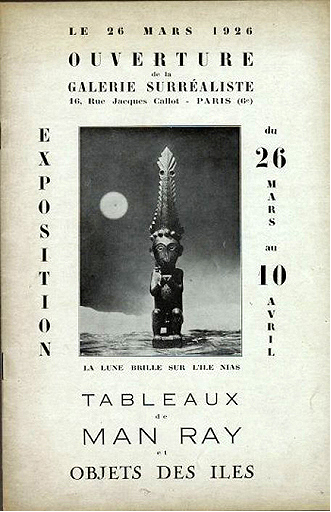
The Avant-garde and its Networks:
Surrealism in Paris, North Africa and the Middle East from the 1930s
Date: 14–15 November 2016
Venue: Orient-Institut Beirut
Organizers: Orient-Institut Beirut/Deutsches Forum für Kunstgeschichte Paris
Surrealism – along with Futurism – can be considered as one of the few avant-garde movements of the early twentieth century that was established in Cairo. In 1939, Georges Henein, Kamel el-Telmessany, Ramses Younan and Anwar and Fouad Kamel founded the Art and Freedom group (Jamaat al fann wal-hurriya), which continued until the late 1940s …
For further information please download the attached document (french version), english version.
The deadline for submission of abstracts (300 words) is 15 June 2016. Please send your abstract together with a short biographical statement to Monique Bellan (bellan@orient-institut.org) and Julia Drost (jdrost@dfk-paris.org). Successful applicants will be notified by late July 2016.
La date limite pour envoyer les résumés de vos communications (300 mots) est fixée au 15 juin 2016. Nous vous remercions de joindre une courte notice biographique et d’adresser le tout à Monique Bellan (bellan@orient-institut.org) et Julia Drost (jdrost@dfk-paris.org). Les candidats retenus seront informés d’ici à la fin du mois de juillet 2016.
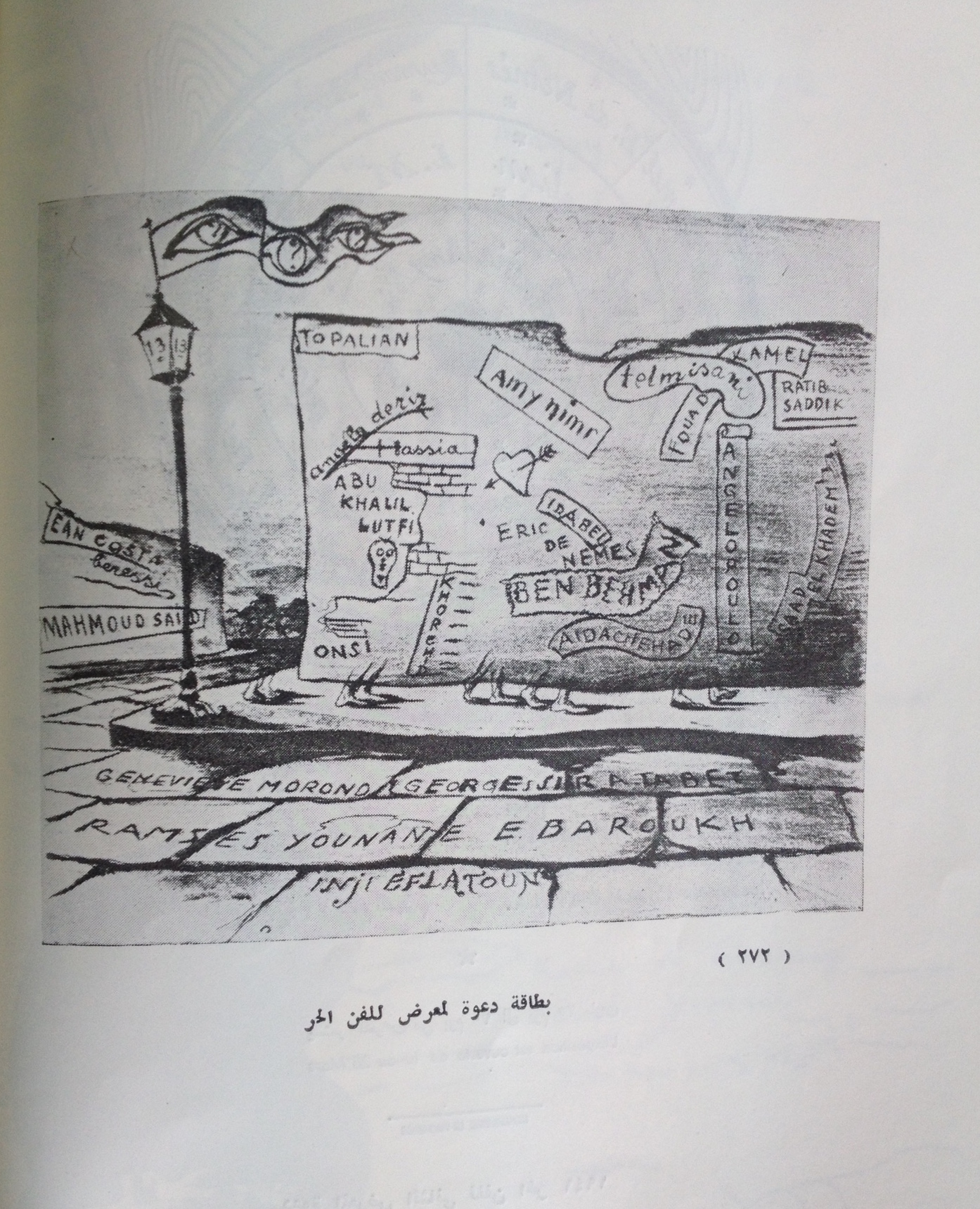
Provenienzforschung. Wechselseitige Perspektiven – Frankreich und Deutschland
Das Deutsche Forum für Kunstgeschichte (DFK Paris) und das Institut national du patrimoine (INP) organisieren in Kooperation mit dem Institut national de l’histoire de l’art (INHA) und dem Arbeitskreis Provenienzforschung e.V. vom 2. bis 3. Juni eine zweitägige Veranstaltung zum Thema »Provenienzforschung. Wechselseitige Perspektiven – Frankreich und Deutschland«. Expert/-innen beider Länder aus den Bereichen Provenienzforschung, Museumswesen und Kunstrecht werden hierbei in Dialog treten. Siehe Veranstaltung.
Bewerbung »Vernetzungstreffen«:
In Ergänzung zu den Vorträgen findet am Nachmittag des 3. Juni ein Vernetzungstreffen statt.
Dieses Zusatzmodul richtet sich an Interessent/-innen mit einer Altersgrenze von 30 Jahren und sehr guten Französischkenntnissen.
Anreisenden deutschen Teilnehmer/-innen kann mit freundlicher Unterstützung des Deutsch-französischen Jugendwerks (OFAJ/DFJW) und des DFK Paris ein Reisekostenzuschuss bis maximal 200 € gewährt werden. Voraussetzung für eine Förderung ist eine erfolgreiche Bewerbung für das Vernetzungstreffen sowie die Teilnahme an der Gesamtveranstaltung »Provenienzforschung« (Fachvorträge und Vernetzungstreffen).
Interessenten werden gebeten, ein kurzes Motivationsschreiben sowie einen aktuellen Lebenslauf einzureichen, siehe Ausschreibung. Bewerbungsschluss ist der 20. Mai 2016.
« Réalité autre, mais réalité quand même »
Hans Hartung und die Abstraktion
Internationale Tagung am Deutschen Forum für Kunstgeschichte,
Paris, 12./13. Januar 2017
Konzept:
Thomas Kirchner (Deutsches Forum für Kunstgeschichte, Paris)
Antje Kramer-Mallordy (Université Rennes 2/Archives de la Critique d’Art)
Martin Schieder (Universität Leipzig)
Mit Unterstützung der Fondation Hartung-Bergman, Antibes
Bewerbungsfrist: 12. September 2016
Weitere Informationen entnehmen Sie bitte diesem Dokument.
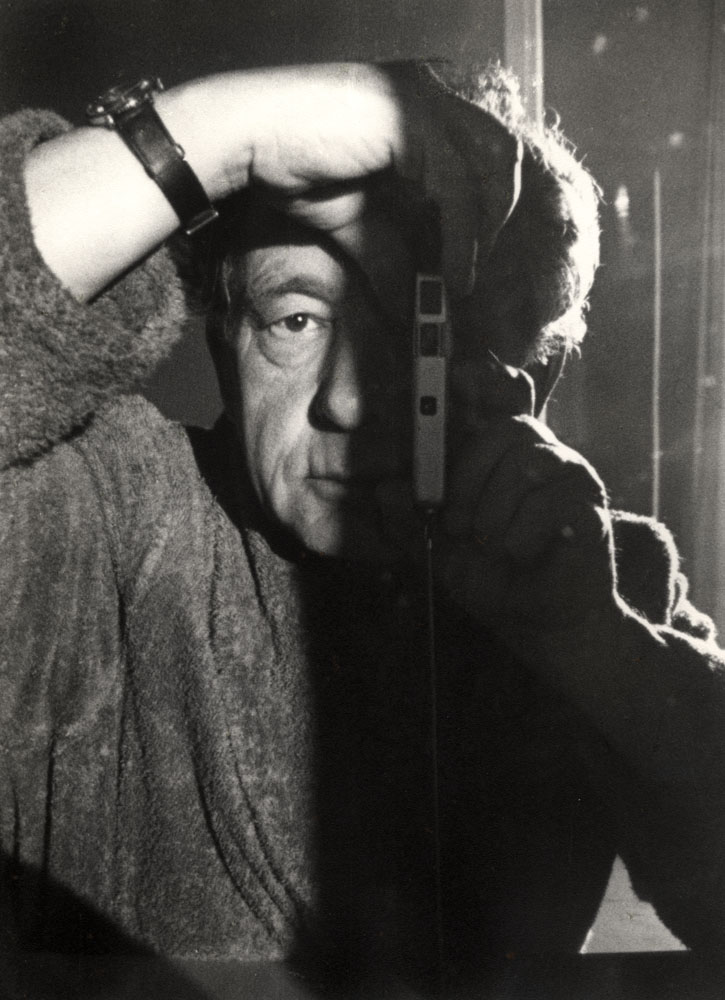
Picturesques Modernities
Architectural Regionalism as a Global Process (1890–1950)
30. November / 2. Dezember 2016
Deutsches Forum für Kunstgeschichte Paris
Konzept: Michael Falser (Universität Heidelberg)
Internationale Konferenz in Zusammenarbeit mit dem Cluster of Excellence ‘Asia and Europe in a Global Context’ (Global Art History), Deutsches Forum für Kunstgeschichte Paris, Centre de recherche interdisciplinaire en histoire, histoire de l’art et musicologie der Universität Poitiers (CRIHAM/Département d’histoire de l’art et archéologie), Centre André Chastel (CNRS/Universität Paris-Sorbonne) und Association d’histoire de l’architecture (A.H.A.).
Einsendeschluss: 15. August 2016
Weitere Informationen entnehmen Sie bitte diesem Dokument.
Studientag zu Otto Dix, 28.-29. November 2016 in Colmar
Bitte senden Sie eine Beschreibung Ihres Themenvorschlags (max. 3000 Zeichen, in deutscher, franz. oder engl. Sprache) sowie einen aussagekräftigen Lebenslauf und eine Liste der Publikationen bis zum 16. Mai 2016 in einem einzigen Dokument (Word oder pdf) an Aude Briau: abriau@musee-unterlinden.com
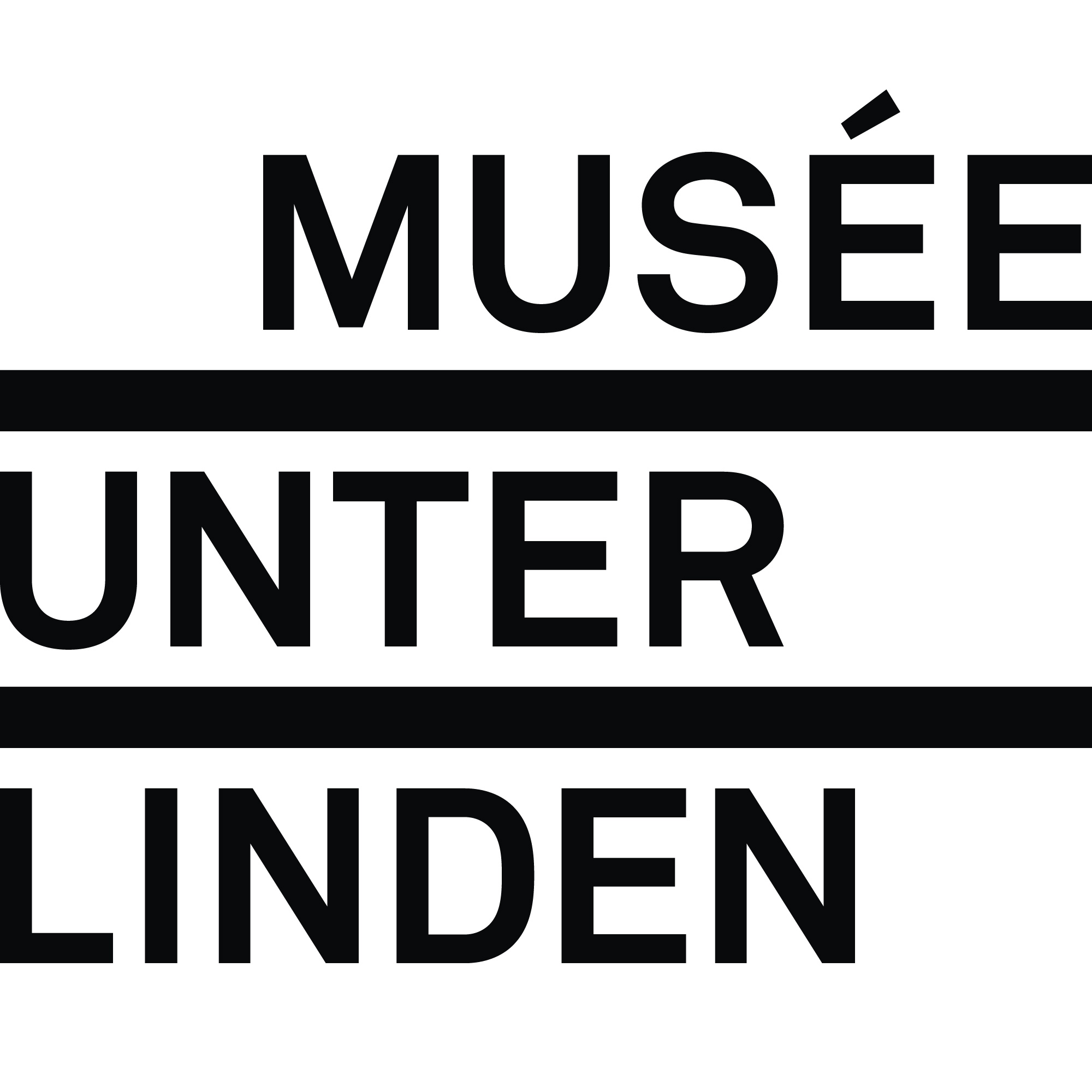
Workshop for Emerging Scholars - Histories of Abstraction : Hans Hartung
Appel à communication : Séminaire Jeunes Chercheurs/Jeunes Chercheuses
Histoires de l’abstraction : Hans Hartung
Lieu : Fondation Hartung Bergman, Antibes
Dates : 26-28 mai 2016
Date limite : 15 mars 2016
Call for papers: Workshop for Emerging Scholars
Histories of Abstraction : Hans Hartung
Location: Fondation Hartung Bergman, Antibes
Dates: May 26-28th, 2016
Deadline: March 15th, 2016.
Ausschreibung: Workshop für Nachwuchswissenschaftler/-innen
Geschichten der Abstraktion : Hans Hartung
Ort: Fondation Hartung Bergman, Antibes
Datum: 26.-28. Mai 2016
Bewerbungsfrist : 15. März 2016
Exotische Bilder.
Fernweh (in) der Kunstgeschichte
Workshop am Deutschen Forum für Kunstgeschichte Paris (DFK), in Zusammenarbeit mit dem Sackler Research Forum am Courtauld Institute of Art
Paris, 9. und 10. Juni 2016
Bewerbungsfrist abgelaufen
Als Symptom einer Leerstelle deuten »exotische Bilder« auf ein Bedürfnis der Kunstgeschichte, das in historiographischer Perspektive durchaus positiv befragt werden kann. Die Tagung möchte den verschiedenen Motivationen hinter diesen Diskursen in methodenkritischer und ideengeschichtlicher Perspektive nachgehen.
Informationen im PDF-Format zum Download.
